#artist is one year older then Napoleon
Text


The Four Seasons — Summer
Jean Baptiste Debret
1804, Napoleonic era
#artist is one year older then Napoleon#pretty#detail#art#painting#neoclassical#neoclassical art#Jean Baptiste Debret#debret#Jean-Baptiste Debret#napoleonic era#napoleonic#first french empire#19th century#french empire#france#art history#angel#angels#Cupid#cupids#cherub#cherubs#classical#horoscope#classical art#astrology#mythology
110 notes
·
View notes
Text
THIS DAY IN GAY HISTORY
based on: The White Crane Institute's 'Gay Wisdom', Gay Birthdays, Gay For Today, Famous GLBT, glbt-Gay Encylopedia, Today in Gay History, Wikipedia, and more …
August 9



1855 – The French symbolist poet, novelist and reluctant journalist Jean Lorrain, was born on this date (d.1906). Born Paul Duval, Lorrain was a dedicated disciple of dandyism, and (for the times) openly Gay. Lorrain wrote a number of collections of verse, including La foret bleue (1883) and L'ombre ardente, (1897). He is also remembered for his decadent novels and short stories, such as Monsieur de Phocas (1901) and Histoires des masques Sonyeuse, which he links to portraits exhibited by Antonio de La Gandara in 1893.
The once famous journalist worked only because he had to. He preferred to spend his life sleeping with the sailors along the Paris, Nice and Marseilles waterfronts. "Fucking," he once wrote, "is basically a sport for idle minds. When you work, it's good-bye ass!"
Although his works are largely forgotten today, they should be revived and vigorously pursued. How can one ignore an author who, in a fashionable Parisian restaurant, once shouted at the top of his lungs the following couplet: "I spent the night between two fellows from the docks, / who took turns, and cured me of the hots!"
His best novels appeared in his final years. Monsieur de Bougrelon (1897), Monsieur de Phocas (1901), and Le Vice Errant (1902) center on men mired in decadence, vice, and (implicitly) homosexuality; La Maison Philibert (1904) gives a picture of life in a provincial brothel and a panoramic tour of Parisian prostitution and criminality.
Most of Lorrain's income derived from journalism. Beginning in the mid-1880s, he wrote regular columns for a series of mass-circulation newspapers, most notably Le Courrier francais, L'Evenement, and L'Echo de Paris. He chronicled Parisian life of the day--the literary, theatrical, and artistic worlds, as well as French society, both high and low--using his savage wit to attack and ridicule many of the era's leading figures. In the process, he made countless enemies. Edmond de Goncourt wondered in 1895, "What's Lorrain's dominant trait? Is it spite or a complete lack of tact?" (Most people thought it the former.) But as Sarah Bernhardt once wrote Lorrain, "inside the abominably depraved being that you are, there beats the heart of a great artist, a genuinely sensitive and tender heart."


1875 – Although born in Caracas, Venezuela, Reynaldo Hahn (d.1947), was raised and educated in France, studying music at the Paris Conservatoire under Massenet. He also studied with Gounod and Saint-Saëns, with whom he is widely believed to have had a relationship. He is said to have been a lover of Proust. He appears to have been rather handsome, intelligent and charming.
A child prodigy, Reynaldo made his "professional" début at the salon of the eccentric beldam Princess de Metternich (Napoleon's niece). Hahn played the piano accompaniment to his own singing of Jacques Offenbach's arias on this occasion; just a few years later at the age of eight, Hahn would compose his first songs.
Despite the Paris Conservatoire's tradition of antipathy towards child prodigies (Franz Liszt had famously been rebuffed by the school many years before), Hahn entered the school at the age of ten. His teachers included Jules Massenet, Charles Gounod and Camille Saint-Saëns; Alfred Cortot and Maurice Ravel were fellow students.
Ironically, there are personal letters Hahn wrote in which he was frequently critical of homosexuals and homosexuality. This is understandable considering the epoch in which he lived: the disgrace of Oscar Wilde was to occur shortly.
1894 was to prove a fateful year for Hahn. At the home of artist Madeleine Lemaire, he met an aspiring writer three years older than himself. The writer was the then little-known, "highly strung and snobby" Marcel Proust. Proust and Hahn shared a love for painting, literature, and Fauré. They became lovers and often traveled together and collaborated on various projects. One of those projects, Portraits de peintres (1896), is a work consisting of spoken text with piano accompaniment.
Hahn honed his writing skills during this period, becoming one of the best critics on music and musicians. Seldom appreciating his contemporaries, he instead admired the artists of the past , shown in his portraits of legendary figures. His writing, like Proust's, was characterized by a deft skill in depicting small details.
Proust's unfinished autobiographical novel Jean Santeuil, posthumously published shows nascent genius and foreshadows his masterpiece À la recherche du temps perdu. Proust began to write it in 1895, one year after meeting Hahn, on whom the hero is reportedly based. Although by 1896 they were no longer lovers, they remained lifelong friends and supporters until Proust's death in 1922.
Hahn is best known as a composer of French songs in the classical song tradition, including settings to Victor Hugo and the poems of Verlaine, but he also wrote operettas, chamber and orchestral music. The fine craftsmanship, remarkable beauty, and originality of his works capture the insouciance of la belle époque.
He was also a conductor, specialising in the works of Mozart; was general manager of the Cannes Casino opera house; and was for years the influential music critic of the French newspaper Le Figaro.
Forced to leave Paris in 1940 during the Nazi occupation, he returned after the war in 1945 to fulfill his appointment as director of the Paris Opéra. Unfortunately, he died shortly afterwards without executing the reforms for which his supporters had hoped.


1923 – Born: the Portuguese surrealist poet Mário Cesariny also known by his full name Mário Cesariny de Vasconcelos (d.2006). Among the most important Portuguese surrealist poets, Cesariny published several major works during a career spanning 50 years. Cesariny was also a painter, but his work became more centered on poetry in the 1950s.
Cesariny studied in the prestigious Escola de Artes Decorativas António Arroio and also studied music with the composer Fernando Lopes Graça. Later he joined the Académie de la Grande Chaumière in Paris, where he met André Breton in 1947. He soon became influenced by the French surrealist movement and was one of the biggest supporters of the movement in Portugal, where he founded the Lisbon Surrealist Movement with other Portuguese artists including Alexandre O'Neill and José-Augusto França.
After being acquainted with the surrealist movement, Cesariny moved away from the neorealist movement, important at the time in the country for being composed mainly by members of the resistance against the fascist-leaning regime of Oliveira Salazar. He adopted an attitude of constant experimenting in his work. This principle is the main characteristic of his work and was present throughout his career.
From 1960 until April 25, 1974, Cesariny was mercilessly harassed by the Portuguese Polícia Judiciária "on suspicion of vagrancy," a euphemistic term used by the police in those days for homosexuality, The poet suffered this persecution courageously. His homosexuality and the persecution are mentioned several times in his writings in a veiled way. They were one of the causes of his intermittent stays in Great Britain and France during the 1960s and 1970s. Later he talked publicly about it.


1967 – The influential British playwright Joe Orton died on this date. (b. 1933). He was murdered by his partner Kenneth Halliwell , who then killed himself.
In a short but prolific career lasting from 1964 until his death, Orton shocked, outraged and amused audiences with his scandalous black comedies. The adjective Ortonesque is now used to refer to something characterised by a dark but farcical cynicism.


1980 – Charlie David is a Canadian actor, who stars in the LGBT horror series Dante's Cove. He has also worked as a producer, writer, and TV host on a number of shows like F.Y.E!, SpyTV, Bump! and Crash Test Mommy. He is co-owner, alongside Derek James and Linda Carter of Border2Border Entertainment, a production house of film and television projects.
Charles David Lubiniecki was born in Regina, Saskatchewan, and raised in Yorkton. During high school, David performed in the musical group Sask Express. In 2000, he graduated from the Canadian College of Performing Arts, Victoria, British Columbia.
He then moved on to co-found the boy band 4Now, in which he played piano. The band performed around Canada and the United States and opened for acts including Destiny's Child, The Black Eyed Peas and Pink. The band released two recordings and is currently on hiatus.
David later turned his attention to hosting and acting. He hosted for E! Television, NBC, OUTtv, here! TV, Pink TV, EGO, and Life Network.
He appeared in the mini-series Terminal City in 2005 and is in the movies A Four Letter Word (2007) and Kiss the Bride (2008). He wrote the screenplay and stars in the film Mulligans, which had its premiere at the InsideOut LGBT Film Festival in Toronto in May 2007.

In addition to the movies he has been in, he also wrote several books: Mulligans, Boy Midflight and Shadowlands. He has also narrated the audiobook for Shadowlands.
David plays Toby in the LGBT horror series Dante's Cove. The character is portrayed in a monogamous and loving relationship with boyfriend Kevin (Gregory Michael). David said in an interview,
"What was attractive [about the role] was for me to portray a gay relationship, in which it's not always a different guy every night. Many gays and lesbians do pursue—and have—loving relationships in which we are very committed to each other. I think that is what Toby brings to the show. He is kind of a voice of reason, and has a definite dedication to his boyfriend."


1982 – Aiden James is an American folk-pop singer, songwriter and musician from Philadelphia, Pennsylvania. He has released two albums to date, and has toured extensively throughout the United States both as a solo performer and as an opening act for Matt Morris, Shawn Colvin and Andy Bell.
He was born in Philadelphia, Pennsylvania. He grew up in the foster care system and does not know his mother and father. He started playing the piano at age 4, and started to sing at age 6. He started performing in children's choirs and small theatre productions. He has told the press that his first musical memory was trying to play Richard Marx's "Right Here Waiting" on a toy keyboard at the age of four or five.
In 2008, James released his debut album On the Run. His video for the album's title track received airplay on both MTV and Logo, expanding his audience beyond Philadelphia. Over the next few years, he supported the album by touring extensively, including an appearance at the Falcon Ridge Folk Festival in 2010, a live performance on SiriusXM, and a tour with singer-songwriter Christopher Dallman which included performances in Philadelphia, New York City, Boston, Portland, Seattle, San Francisco, Los Angeles and San Diego.
In 2013, his live performances included a show with Matt Morris in Denver, Colorado, performances at the Viva la Vida Festival in Pioneer, California, and the Folsom Street Fair in San Francisco, and a headlining spot at Pride Northwest in Portland, Oregon. In 2014, James released the single "Last Reminder", which was cowritten with Morris, and performed at the Castro Street Fair in San Francisco.
James, who is openly gay, supports organizations including PAWS, a non-profit organization based in Philadelphia dedicated to saving homeless, abandoned and unwanted animals.


1995 – Justice Smith is an American actor. He is best known for his roles as Franklin Webb in the 2018 science fiction film Jurassic World: Fallen Kingdom, Tim Goodman in Detective Pikachu and Theodore in All the Bright Places alongside Elle Fanning.
Smith was born in Anaheim, California. His father is African-American and his mother is of European descent. He is the fifth of nine siblings. Smith graduated from the Orange County School of the Arts in 2013 and has performed in shows around Orange County.
Justice Smith participated in a live reading adaptation of The Importance of Being Earnest by Oscar Wilde and This is Our Youth by Kenneth Lonergan with Acting for a Cause, a live classic play and screenplay reading series, created, directed and produced by Brando Crawford during the 2020 pandemic to help raise funds for non-profit charities including Mount Sinai Medical Center.
Smith came out as queer in an Instagram post on June 5, 2020, and said he is in a romantic relationship with actor Nicholas L. Ashe. Smith took to his Instagram with a call-to-action for the Black Lives Matter movement to be more inclusive of Black queer and Black trans voices. His post culminated with a declaration of his love for his boyfriend, the actor Nicholas Ashe, a decision he didn’t take lightly. As he wrote under the photo: “There is so much tragedy on the timeline these last couple of days so I added some photos of me and Nic to show some [blackqueerlove].

Justice and Nicholas Ashe


2007 – On this date, the gay cable channel LOGO and the Human Rights Campaign hosted a first-ever Gay Debate for presidential candidates. Present at the debate were Hillary Clinton, Barack Obama, Dennis Kucinich, John Edwards and Chris Dodd. Candidates from the two major parties were invited but none of the Republican candidates showed up.


3 notes
·
View notes
Note
Hi!! I’m doing some research for a story I’m writing and wondered if you might be able to help me out. There’s a possibility that one of my characters needs to attend some form of military school before he’s 18. I found the Prussian Staff College (Preußische Kriegsakademie) and with some cursory research learned that acceptance required (among other things) 3-5 years of prior military service. I wonder if there were any options for young boys to be enrolled in military school or military prep academy without prior service? You seem like the most likely person in my sphere to know so I just thought I’d ask!
Hey there! I'm flattered that you came to me for help! Unfortunately, I couldn't find anything on being a CO without military experience. After Jena in 1806, FW3 opened up meritocratic promotions regardless of whether or not a soldier was a noble. But y'know...meritocracy only works by being in the army already so that doesn't help you. As for the War College, I have virtually nothing on hand about it. Best I could find was a journal article on JSTOR citing the same fact you did (I'm assuming we both read Irvine?). And I found a Scientific American article from 1871 saying essentially the same thing. Unfortunately, it looks like you're going to have to make you protagonist older if you want him to have attended the War College.
Fortunately, for all the wars Prussia was in in the 19c, there were also periods of relative quiet. You could have him do his 3-5yrs, be admitted and graduate from the War College after another 3yrs, and still be green when it comes to real military engagement. Napoleon is finally defeated by 1815 and Prussia doesn't see war again until 1848 against Denmark (yet another chapter in the story of Prusso-Danish enmity /s). I don't think you'd be getting a military academy that's akin to Wespoint/a modern uni system in Germany until the 1930s, which would be an entirely different story. If I were writing this, I would bump the ages up. In the grand scheme of artistic compromises, it's not the worst in the world. You could also just...make up something. Historical fiction writers do it all the time and, if it's about Prussia and in English, most people won't give a rat's ass. Sometimes narrative > facts. Politicians do it all the time, why shouldn't you for one story about something that won't tear at the fabric of our shared reality (although, if it does, that's fucking metal for you dude!).
Anyways, I do hope you find something eventually that works and I'm sorry I couldn't be more helpful. I'd love to read your story when it's finished!
2 notes
·
View notes
Text
What’s the vibe? #46

General Election next year May probably - I don't think Rishi Sunak has anything left in him tbh......
Sadiq Khan rejects the MSG Sphere.
Spirituality: sell me a soul, or a car
"Car ads are so spiritual now" - is something this older man said behind me at the cinema on Saturday before Napoleon. It made me think about how car ads went from being sexual to spiritual. I feel like a lot of this also has to do with shifting masculinities and family definitions. Men were dominant consumers of cars (and also dominant gender of workers).
But now it's shifted - families are less defined and more diverse and its about selling to singletons with big pockets.
youtube
So this car as, Polestar and Tesla (which doesn't advertise but definitely relates to aspects of religion) are about objects that take you to places of fulfilment. This "techno spiritualism" which involves makers needing to "build tools with the goal of getting them to a level of transcendence or connectedness".
When you think about this Jorja Smith x Audi ad, it's appealing to her fans or just people interested in her musical spirit. I mean yes, Jorja Smith is like a sex icon to many men in the UK...but in this ad, the return to roots is celebrated. Isn't that what spirituality is all about? Grounding?
youtube
"Gen Z’s version of spirituality is based on the ability to choose their own values, build their own rituals and understand a personal form of faith rather than a mandated one. Whether meditating, pulling tarot cards or diving into astrology, their spiritual practices are often performed solo. Self-care culture and the #ThatGirl trend encourage people to spend copious time alone to preserve wellbeing." - WGSN Emerging Concept: Remixing Religion Report.
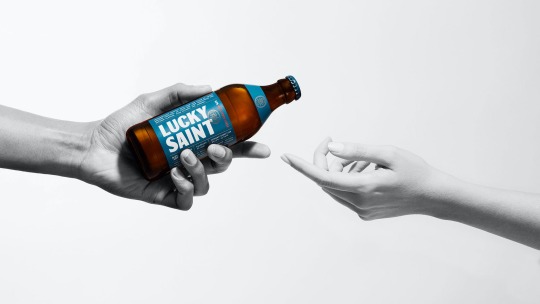
This could also relate to the rise of the sober consumer and not in the way that they describe which is about "food and drink products are helping consumers find transcendence via their taste buds". And the rise of the sober-versary screenshot and the self control? This is quite different for British people I would say as we're not a country that uses alcohol for taste, more as a drink to lubricate social situations and pubs are more working class networking.
Best of Gift Guides?
Bloomberg Gift Guide - split into the 5 senses!
SSense Gift Guide
Vittles!
Unifrom - fragrance brand with great sensual imagery
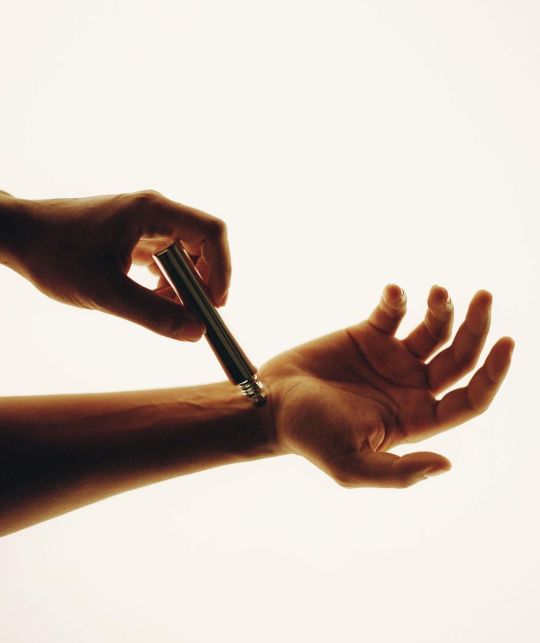
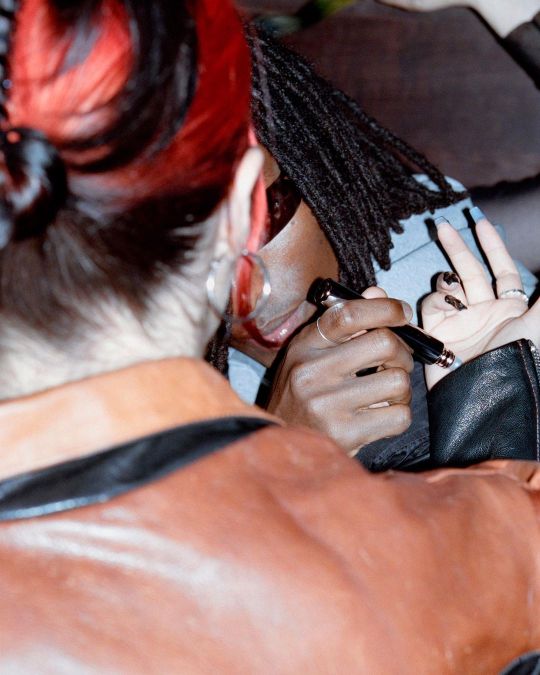
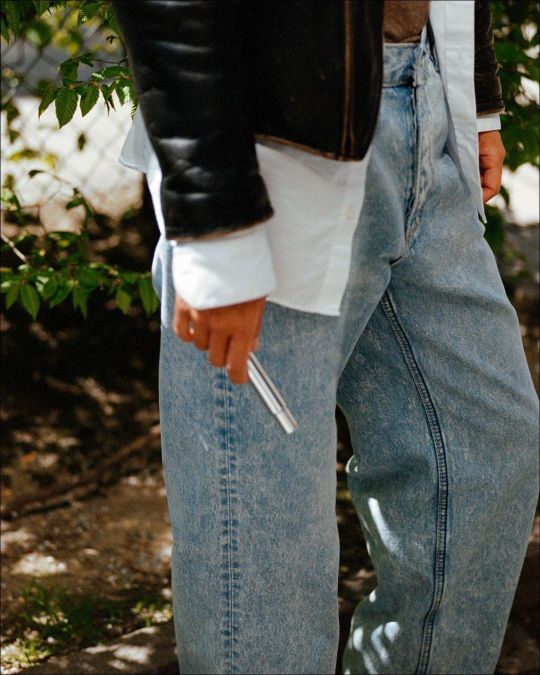
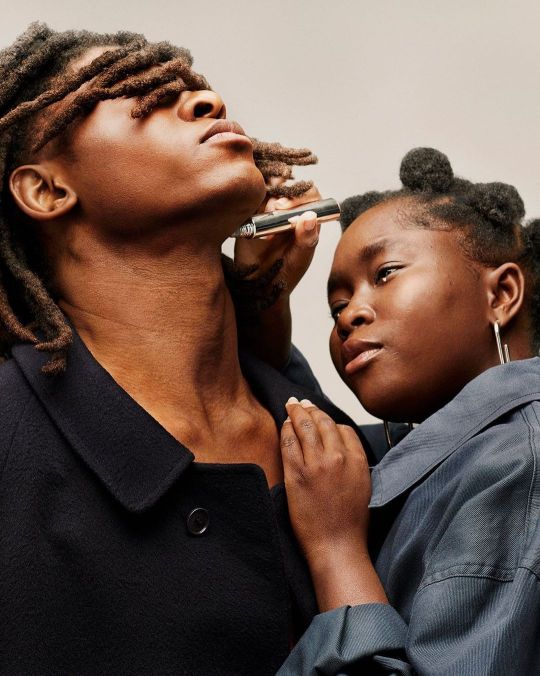


albums of the past few weeks - Andre 3000, Mary Lattimore, Space Africa x Rainy Miller, Frost Children, Danny Brown. Typically this is best of list season in the next few weeks soooo...
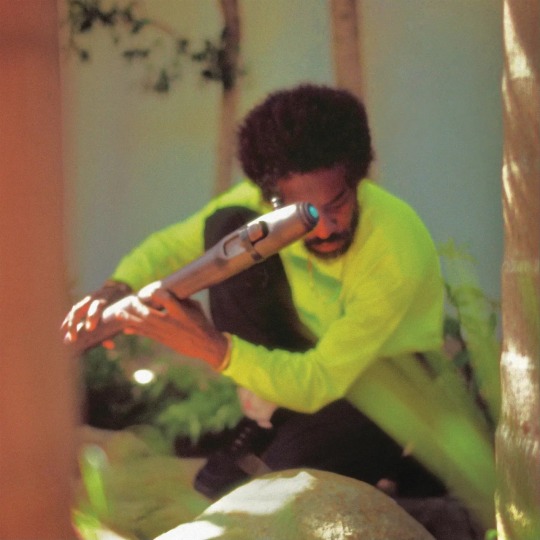
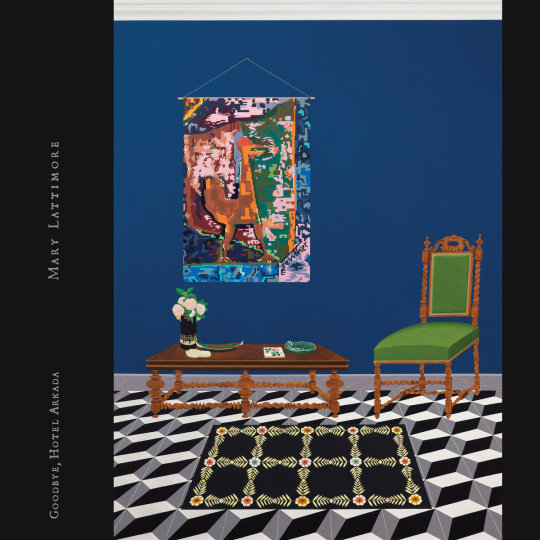
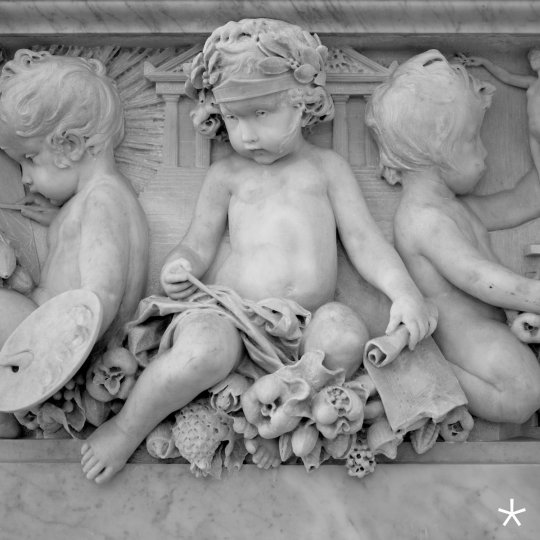


Reading List:
0 notes
Photo


One of my favorite theatre companies in the New York area is Hudson Theatre Works. Coming from Connecticut, I don’t always “like” their work but they always manage to challenge the audience and ask them to make up their own minds.
I am happy to report that (they are actually in an old school building in Weehawken, NJ) that their latest is provocative and challenging.
“Shelley”, by Joanne Hoersch, is a radiant take on how the creation of a work of art is a torture, a bliss, a collaboration of memory, experience and courage, that takes us by the hand with its framing character, 78 year old Claire Clairmont, who, in her youth, was part of a ménage à trois with the Romantic poet Percy Shelley and more importantly for this story, his wife and Claire’s stepsister, Mary Shelley. She invites us to “come, share these memories with me.”
We follow them from their high spirited escape from Mary’s overbearing father to what they envision is a liberated France where women have the right, as Percy says, “to choose whom they will marry or even if they will marry.”
What they discover is a far cry from what they expected; France is a desolate land pillaged by years of revolution, The Terror and now the Napoleonic Wars. They meet one man, scarred, mutilated by the wars, one eye bulging from a smashed bone, his arms telling the history of attacks by both the Jacobins and Napoleon’s army. Claire is repulsed by the man’s appearance while Mary is haunted by him.
And so begins Mary’s journey towards creating what will become one of the most influential novels ever written; Frankenstein.
The play cleverly and poignantly inserts the group’s experiences with hallucinatory drugs, an experiment with reanimation (it was believed at this time that applying electrical current to a dead person could bring the person back to life), open marriage, radical politics, as well as a beautifully rendered story of a young duchess who was sent to the guillotine.
Mary’s rich imagination runs in parallel to the harsh realities of her life. Rather than witnessing the electrical spark of life, we witness the spark of creativity, the struggle to find the artist’s voice, as well as the fear but also the excitement of jumping into the void to write something that has never been written before. Claire, the least talented but most life affirming character in the play, tells us in her final monologue that “I read some of my poetry to Percy, and briefly looked up at him. I could tell how ordinary he thought I was and it delighted him “ She freely admits that Percy and Mary’s names will never be lost to history, but hers will. Yet, she stands as the lone survivor, the only one left who knows what the true, not the mythic content of their lives actually was.
Ryan Natalino brings a passionate commitment to the role of Mary, pushing her life forward towards something she knows is there, yet still unreachable. BC Miller as Claire is a delight, sexually brave, light hearted with an impeccable sense of comic timing and an important counterpoint to Mary’s intellectualism. Daniel Melchiorre’s Percy is, despite his radical views, an aristocrat, and Mr. Melchiorre expertly navigates the tightrope between what Percy believes and what Percy is. Todd Hilsee as Mary’s father, William Godwin, lets us feel the weight he carries of having once been famous and relevant and now reduced to poverty and dependency. His disgust with Percy is a thinly veiled jealousy of Percy’s standing in the world, which enhances the enmity between them. And Joanne Guarnnacia, as the older version of Claire, reliably keeps a strong hold on the narrative until her final monologue, which brought me to tears. Frank Licato’s direction, as always, is precise and spare. And, as usual, he always gets wonderful performances from the actors. The set and lighting by Gregory Erbach is evocative, as are the costumes by Ann Lowe and the sound/music by Donald Stark.
0 notes
Text
Behind the scenes with The Calling
[January 14, 2023]
{Popia140:}
So I speedran through The Calling [Haji’s old Randomized Platinum fic] and lemme just say how I really love how the gym battle system worked, the dancing and literal physical combat between the Pokémon and the literal trainers themselves
Pepe’s adorable, but that scene in Floaroma when he stops the grunts from the stealing the man’s honey with his creepily calm assertiveness was pretty badass to me, ngl, considering his reluctance to confront and fight
Even though it is old, the mystery surrounding certain locations is pretty good (Old Chateau, the Ravaged Path, that weird pool thing in the Oreburgh Mines) it’s cool to see someone’s interpretation of events different from my own
Also Pepe and Pearl’s relationship was very fun to read! The mystery of Napoleon’s disappearance really piqued my interest, and I was not really sure if he was his older brother in this interpretation (idk if they got separated from birth or something, or just simply not brothers at all) but it’s nice to see that Pearl still cares for him
Another thing that interested me was Pepe’s religious upbringing, with the fossils and all and being raised in some church, before moving to Twinleaf Town- I think it really gave his character good background and depth, which also ties into his peacemaking pacifist-like mindset
But anyways that’s all I have to say about Haji’s The Calling series, hope you don’t mind my rambling review @Haji
{Haji:}
I don't mind at all! You're making me blush :AYAYA:
I really enjoy the battle system. I've been trying to study different dance styles to make each one unique in how it functions.
I would normally be all like "shhh spoilers" but considering the story hasn't had an update in like five years, it seems silly to ask you to wait. It's a separated at birth situation. Why though is because I play a lot with destiny in the TPP universe especially having a single timeline in a seemingly cyclonic world
Timeline wise as you may have noticed while reading, this is actually before original Platinum
{Popia140:}
oooh! Did not know that! :Begwan:
So I was right with the separated at birth theory!
{Haji:}
Yeeeaaah.... [Pepe’s religious background] was one of the factors in my nervousness. At the time I preceded every Author Note basically going "Look, my lore is weird. Don't eat me" or something because I knew even if that's how it played in my head, I was scared of "going against the grain" with what everyone else was doing. Which mostly was Pepe the Frog memes and artistic snob portrayal
{Popia140:}
Personally, I felt that the artistic snob sort of personality didn’t mesh well with his shyness (in my opinion, it’s just a matter of taste), but I imagine that if he did paint, it would be out of a sort of therapy for his trauma under the voices and the crazy things he experienced in his life… or he just wanted to paint a cute Skitty because he has a weakness for cute things :Begwan:
Could go both ways, imo
Also, who was the girl during the blackout at the Ravaged Path?
{Haji:}
I can see that. In fact, after Ultra events, I like to imagine he does a lot of art for that reason. Still trying to remember things and drawing out memories to make sense of it. His friends can remind him of things they recognize or talk to him about some of the more disturbing images
[The girl in the Ravaged Path] would be Mindy! The Candice replacement in this world. She was a Psychic Trainer and portrayed as a showman, but Fossil wise, I had her with Cover
{Popia140:}
Napoleon is mentioned by Pearl in the story, so I’m assuming they must have met when they were very young- where did Napoleon end up? And did Pepe learn that Napoleon was his older brother in the end, maybe after-game?
{Krizste:}
What if Pepe uses art snobism to cover his shyness. Like he's trying to appear..... Whatever the word is.. not-shy, but It just looks like snobism
{Newbie:}
Confident?
{Krizste:}
Yeah that word!
Tryna pull of confidence but just being really jank about it
{Haji:}
Given what people probably expect of him as Napoleon's brother, I can imagine him putting on that kind of face at parties :Jebaited:
Napoleon went to stay with Aunt Grace and Richard while all this was going on. Honestly never knew he had a brother until after Ultra events. Which finding out after that just made him worse about the whole... Trying to murder Pepe multiple times while not himself thing. Pepe woke up at the villa after they got back home only to learn it's been months he's been in a coma (time shenanigans. He made sure Leo was able to wake up in the "canon" timeline in order to stop Cyrus but it seems in a weird way, Pepe took his place. Missed everything during the Bill Overlord events and was too injured to do the Unova stuff with Cly, but Leo knew he was okay enough to go with the other S1 hosts)
Pepe on the other hand found out about Napoleon during his journey, so he knew about it WAY ahead of Leo but they still didn't meet for.... Some time??? Again, Pepe becoming a time traveler at the end of his run makes his lore in my timeline hilariously screwy
{Krizste:}
Oh yeah who was it that lost his head again? Was that pepe
{Haji:}
Yup
{Popia140:}
Ahh thanks for the answers!!
Napoleon completely in the dark about it, lol
Did their mother separate them at birth?
{Haji:}
Sort of. With Forrest's [Gardenia] backstory I was going to get more into the pre-RPlat / pre-Red war stuff that was going on when he was a kid. Gravund [Roark] and the boys would have been too little to remember but Forrest was a little younger than Pepe is now so he's got some scars from it. Basically the family got split up when fleeing the violence so Johanna has Leo with her and thought her husband and other son didn't make it. Pepe was taken to Hearthome like many other war orphans but while it wasn't separated at birth they were both around maybe one or two years old at most
And before you ask about their father, I had an idea and then I wasn't sure but I've been on the fence about things so let's just leave him as a giant question mark
{Popia140:}
Aw, that’s sad for them :BibleThump: the Quinnels never really got to bond as bros
{Haji:}
Yeah... But things are peaceful for next several decades (next Sinnoh run wasn't until Gauntlet), so they've got time. Help out with the others when duty calls, but even many of the other hosts know they can go to Napoleon's palace to get away from things for a while. Cly's mansion is often a nice hang out but it also happens to be the gang's base of operations in secret so there's always some level of alert since Unova isn't as stable as Sinnoh is. (And besides, for Aaaaaall the trauma of Kanto, Johto, and Hoenn seeming to be in a consistent state of peril, Sinnoh is lovingly close by for Leo and Pepe to give a sense of normalcy for the newbies)
{Popia140:}
Aww, a happy ending :Burrito2:
{Haji:}
I love these two so much, but my gosh I feel bad for what I put them through. I feel bad for most of the hosts I wrote for, but good lord did these two need a happy ending
{Popia140:}
They def deserved it, they went through so much
{Haji:}
[cough] can I tell you a secret? |D
{Popia140:}
yea sure
{Haji:}
Even though I stopped writing it, this is the story that has never left my mind. I've actually continued working on it, but never posted and one of my goals is to continue at some point if I ever get my projects in order
Sometimes I'll just be watching a show or something and get reminders of the characters and how much I miss them
[Bonus: a mildly out-of-order side tangent from Haji’s comment about the TPP universe being cyclical]
{Trollkitten:}
In my headcanon, the TPP-verse is cyclical the same way the Zeldaverse is cyclical. All of this has happened before, and it will happen again.
{Haji:}
Yup! Though why is always different in my books partially because the villains have different motives each time (and adds to why they think it would be any different this time because they're not like the last guy who did)
{Newbie:}
i vibe with the idea of the universe just breaking down and getting rebuilt over and over again, reality in smithereens and then being rebuilt from the ground up... or just completely coming up with entirely new plots while disregarding canon :Kappa:
{Mitzi:}
my lore somehow manages to do both. frequently at the same time
{Newbie:}
you and i are like-minded :Keepo:
#twitch plays pokemon#tpp#lorecord archive#loremaker haji#loremaker krizste#loremaker trollkitten#loremaker newbie#loremaker mitzi#randomized platinum run#ultra run#PP#PEE#nqpppnl#pp is the ultra host#timeline cyclicality#fossil gods
1 note
·
View note
Text
Sourcing Copley’s Sociogram
so this started out because i recognized some of the photographs and art on copley’s wall, and got curious about everything else. i know that the dates and locations of the original pictures don’t necessarily have anything to do with what they’re supposed to be in the movie but i thought it was interesting enough to share. plus i spent a not insignificant amount of time tracking down some of these images. the organization is a mixture between chronologically in the show and from a timeline perspective. the rest is under the cut


So we start out with this mosaic that you see when Andy looks at the sociogram for the first time while confronting Copley. This is a Roman mosaic found in Antioch, which is near modern-day Antakya, Turkey. It’s from the 4th century CE and shows an Amazon Warrior in mounted combat against a Greek soldier. Mosaics were found in both private and public buildings throughout the Roman empire. They’re made up of small cut pieces of marble, tile, glass, pottery, stone and shells called tesserae.

Here you have the title page of the 1668 edition of Andromaque, a play written by Jean Racine. It was first performed in November of 1667 for the court of Louis XIV by a company of actors called “les Grands Comédiens.” The play follows the story of Andromache after the Trojan War when her husband Hector has been killed and she has been taken prisoner.
The portrait of Andromache is from the book “Promptuarium Iconum Insigniorum” by Guillaume Rouillé. The book was published in Lyon, France, in 1553. The book is made up of portraits designed as medals, along with brief biographies for notable figures. The art was done using woodcut and there are 950 woodcut portraits in the book.

This is a fresco of Mycenaean woman bearing gifts. It’s from Thebes and was reconstructed by H. Reusch in 1956. The original fresco is from 1400-1200 BCE. Frescos were popular decoration, not just in palaces and tombs but in storerooms, kitchens and workshops. Fresco painting is a technique where the drawing is made on wet plaster. When the plaster dries, the image becomes a permanent part of the wall.
You also have a map by Bernardus Sylvanus (Bernardo Silvano) of Northern India and Central Asia. It’s one of the earliest obtainable maps of the area and the first printed in two colors. This map first appeared in Silvanus’ “Claudii Ptholemaei Alexandrini liber Geographicae” published in Venice in 1511.

This is a photograph of an ornamented, golden Minoan double-axe, or a “labrys.” In ancient Crete, the double axe was an important sacred symbol of the supposed Minoan religion. In Crete the double axe only accompanies female goddesses, never male gods. In Roman Crete, the labrys was often associated with the mythological Amazons.

This is a picture of the Holyland Model of Jerusalem in the Israel Museum. It’s a 1:50 scale model of Jerusalem in the late Second Temple period. It was originally commissioned in 1966 by the owner of the Holyland Hotel and was eventually relocated to the Israel Museum in 2006.
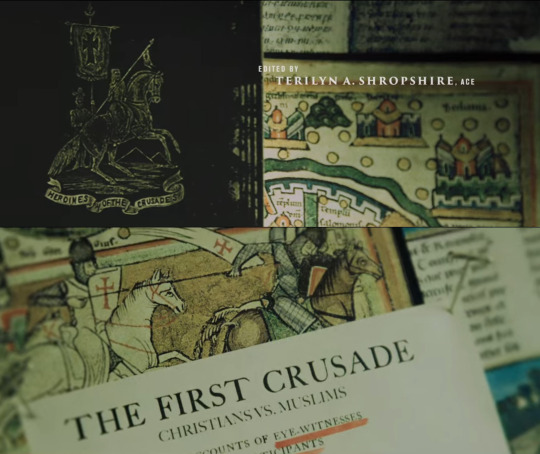
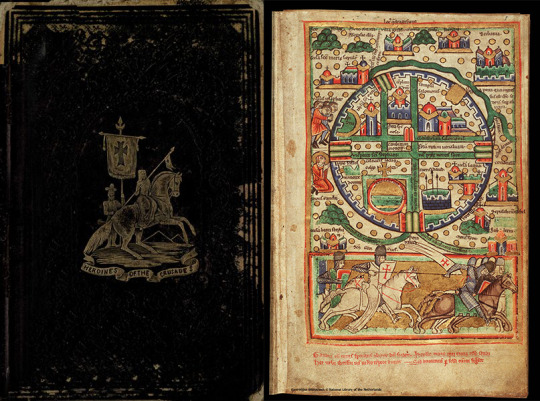
The first image is the cover of the book “Heroines of the Crusades” by C. A. Bloss. I don’t know if this is the original cover, but it is certainly an older edition. The book was originally published in 1853 and contains biographies of notable women who were involved with the crusades, as well as a general overview of the first through to the eighth crusade.
And then hey, it’s The Hague Map of Jerusalem! This is one of the artworks that I knew before. The original map is from 1190-1200 CE. The map takes some liberties with the layout of the city, prioritizing aesthetics decisions like making it have the layout of a cruciform. Circular maps are also like a thing from this time. It also uhhhhh mislabels some things, such as the Dome of the Rock and the al-Aqsa Mosque, but that’s maybe expected. At the bottom you can see some mounted crusaders chasing after Muslim fighters. It’s drawn on vellum.


I’m grouping these two images together for clarity, because they’re both by the same painter. From the moment I saw the paintings, I thought that this was kind of a weird pull for Copley, but not necessarily for us as viewers. These paintings were done by Italian painter Paolo Domenico Finoglia (known as Finoglio) and are from a series of large paintings based on the poem “Gerusalemme Liberata” (Jerusalem Delivered) published in 1581. These paintings are baroque in style and were commissioned in 1634. The first painting is “The Duel of Raymond of Toulouse and Argante” and the second painting is “The Duel of Tancred and Clorinda”. Now, when I say this choice of paintings makes sense to us, what I mean is that parts of the poem Jerusalem Delivered are about a Christian crusader falling in love with a Muslim defender who he then kills on the battlefield (that’s the second painting of Tancred and Clorinda). It’s a fun parallel, although Clorinda converts to Christianity before she dies. Sidenote, but Joe and Nicky probably hated Jerusalem Delivered if they ever read it

This motherfucking painting. Finding out where this painting came from was an absolute nightmare. Not the worst to find, but certainly frustrating. So this painting can be found in the Borodino Panorama museum, although it’s not part of the panorama. The artist is unknown. The year it was painted is unknown. For all we know fucking Joe painted it. This is such a deep dive, I don’t know how Copley found this image. This painting shows French soldiers in Moscow as it burned. It’s called “Французы в Москве” or “The French in Moscow”.



Did you think we were finished talking about Napoleon? Well, we’re not! Copley has a lot of paintings from Napoleon’s Russian campaign on his board. There might be more on his eastern Europe wall too, but unfortunately, I can’t see it well enough to identify any.
The counterfeits potentially made by Booker show the 40 franc gold coin, known informally as the double Napoleon. These coins were first issued by Napoleon in 1803 to replace the earlier Louis coins. They were originally minted in two denominations: 20 francs and 40 francs, although they were minted in denominations of 5, 10 and 50 at various other times. The coins were designed and engraved by Jean Pierre Droz, and Pierre-Joseph Tiolier respectively. In the particular image of the coin that I found, you can actually see Droz’s signature. Tiolier’s signature appears in full on the dies that he cut himself (these coins only have a monogram). From screenshots of the end credits, I can’t actually see the specific denomination, nor can I see the date clearly, however I do know that the coins were minted sometime between 1807 and 1808. There were many different issues of these coins during Napoleon’s reign, and the fact that Napoleon has a laurel crowned head and that the coin says République Française rather than Empire Français narrows the timeline a bit. I might revisit this topic at a later date so watch out for that.
The first painting is “The Battle of Borodino, 7 September 1812” by Louis-François Lejeune in 1822. It’s oil on canvas. This painting depicts the attack on the Shevardino Redoubt, seen from the French side. While it was a French victory, it was a costly battle for both sides. During the Russian Campaign, Lejeune was général de brigade, although he ended up abandoning his post because of frostbite during the retreat and got arrested. He actually kept his paintbrushes with him on the battlefield. This painting was his masterwork. Now, with regards to the actual content of the painting, Booker would have been in the Battle of Borodino, as he didn’t try to desert until after the Battle of Smolensk.
The second painting is “Die Schlacht bei Borodino” (The Battle of Borodino) by Peter von Hess. It was painted in 1843 and is oil on canvas. Von Hess was a German painter who specialized in historic paintings of the Napoleonic Wars and the Greek War of Independence. This painting depicts the same battle as the previous one, although the focus is on the Russian and Lithuanian soldiers, rather than the French. This also shows an event from later in the battle; the counterattack on the Rayevsky Battery.
The last image is “The Boasted Crossing of the Niemen at the Opening of the Campaign of 1812 by N. Bonaparte” by John Heaviside Clark and Matthew Dubourg. The painting was based on a sketch by an officer, then painted by Heaviside Clark and engraved by Dubourg. It’s a coloured aquatint and was published in 1816. The crossing of the Niemen marks the beginning of the Russian Campaign in June of 1812.



There are actually quite a few photos of ToG during the Crimean war (1853-1856). These are actually some of the first war photographs ever taken, which is kind of neat, I guess. These photos were taken by Roger Fenton, a British photographer. These photos would have all been taken in 1855, so the tags on the photos are anachronistic but we can let it slide. The first image with Joe and Nicky is of Croat labourers. The second image of Andy is of a vivandière, a French woman attached to military regiments as a sutler. The last image (also of Joe and Nicky) is of British soldiers and is on of the covers of the book Victorians at War by Ian Beckett.

The photograph from the American civil war was originally of Union Generals, including General Philip Sheridan. At the time of this picture, Sheridan lead the Cavalry Corps, and the flag that you see in the picture is cavalry, so ToG rode horses during the American Civil War, according to this picture. It was taken in 1864.


I find the pictures of Haiti to be very interesting. First off, (and unrelated to the photographs themselves) because there was literally a coup d’état about every two years during this period in Haiti and unlike some of the other photos, these ones don’t even try to pretend they were all taken at the same time, or that they’re related at all. They’re just some pictures of Haiti during the early 20th century and it’s funny. All of photographs were taken in Port-au-Prince in Haiti. The first picture (from the upper left corner) is of the Market Square between 1909-1920. The second image is a street scene, between 1890 and 1901. Now the third photograph is making me lose it because in the movie it’s all mysterious, with a figure circled and a question mark, but in the original image it’s just a little kid standing on a public fountain. He’s not a member of the old guard. He’s not even 10 years old. This picture was also taken between 1890 and 1901. The last photo is another street scene, taken in 1901. I have to say, I’m very glad that the people in charge of the sociogram didn’t edited any of the guards’ faces on to anyone in these photos considering every single person in them is Black.


Okay, so now we’re getting into the First World War photos. There are A Lot of WW1 photos. This photo of Andy is actually from Gallipoli and was taken in 1915 by Ernest Brooks, an official war photographer. The Gallipoli campaign was an attempt by the Entente to weaken the Ottoman Empire by taking control of the Turkish Straits. All invasion attempts were unsuccessful and eventually they evacuated the area at the end of 1915. Andy seems to be wearing an Anzac uniform.
As for the rest of the photos in this shot, they’re also all from the Gallipoli campaign. The first photo is from War Illustrated in June of 1915 and shows Australians soldiers dragging an artillery piece into position at Anzac during the Battle of Gallipoli. The second image is also from 1915 and shows soldiers bringing supplies to the Australian camp. The last image is of Anzac cove shortly after the landing there in 1915.


Originally I didn’t notice that this was an edited picture, but since I was already looking, I decided to track this one down too, and turns out it is edited. I honestly can’t tell whether it’s Booker or Joe, but that kind of looks like Matthias Schoenaerts’ nose, so I’m gonna say that’s Booker. This photograph was taken in May 1917 by Lieutenant John Warwick Brooke in Arras, France. These are British troops at the Battle of Arras, which at the time achieved the honor of longest advance in trench warfare. The battle was very costly on both sides, with around 290,000 casualties total. Warwick Brooke was an official British war photographer.
On the very right-hand side, you can see two pictures. The first one is of infantry of the 1st Canadian Division having a meal in the trenches at Ploegsteert, March 1916. It was taken by another official British war photographer, Lieutenant Ernest Brooks.
The next photo is from a series of photos of a raiding party of the 10th Battalion. It’s of the Cameronians (Scottish Rifles) waiting in nap for the signal to go. John Warwick Brooke, the photographer, followed them in the sap, where a shell fell short killing seven men. It was taken near Arras in March 1917. This photo takes place after the Battle of the Somme, during the German withdrawals to the Hindenburg line.

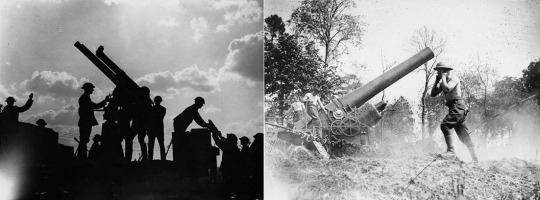
This fucking image. I’m so angry about this image. I spent hours going through World War 1 photo databases and then when I found the original source of the image it told me absolutely nothing!!! A waste of time!!! This is an image of a British soldier assisting two little French girls who had just escaped death but I knew that already, that’s how I found it in the first place. This photo was from the Haig “Official Photographs” series, which were from 1916 onwards. Edit: I found it again!!! This photo was taken in Bethune in May 1918. It was taken by war photographer Ernest Brooks. In April of 1918, the German Sixth Army tried to attack Bethune during the Battle of Lys (Fourth Battle of Ypres) but were repulsed. It was taken between offensives on the Western Front during the German spring offensive. The next major battle on this part of the Western Front began weeks after this picture was taken.
On the top of the screen there are two photographs. The first is a photo by Ernest Brooks from the Battle of Broodseinde (October 1917). The battle was part of a larger offensive - the third Battle of Ypres - engineered by Sir Douglas Haig to capture the Passchendaele ridge. This is an anti-aircraft gun in action during the battle.
The next photograph is also from the German spring offensive, between the Battle of Lys and the Battle of the Third Battle of the Aisne. It shows a 12-inch gun (named "Bunty") of the Royal Garrison Artillery firing at Louez in May 1918. This is another photograph by John Warwick Brooke.

This image of Andy was also originally a photograph taken by Lieutenant John Warwick Brooke. This photo is of the 4th Battalion, Gordon Highlanders (51st Division) feeding a French refugee child in their improvised trench near Locon, France in 1918.

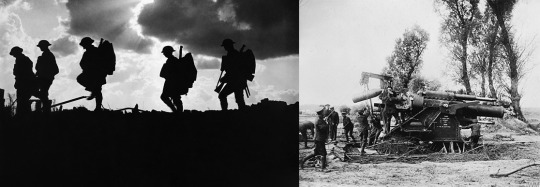
There are so many WW1 photos. The rest of these don’t have any of the characters in them as far as we know, so I’ll go over these quickly. The first picture is from the Western Front in France and was likely taken by John Warwick Brooke. This photograph was taken at night and shows two teams of machine gunners, strategically positioned behind some vegetation. The ground behind them looks sandy, suggesting they might be near the coast. Directly in front of the gunners a mine has just exploded, showering the men with debris. This picture was taken in sometime between 1916-18.
The next photo was also taken by John Warwick Brooke in 1917. This picture is of the Battle of Cambrai and shows a 'C' Battalion tank bringing in a captured 15 cm naval gun. Cambrai is an interesting battle because it was a tank/artillery fight mostly, and the British used a lot of new tank/infantry maneuvers. It also ended very badly for the British.
The third photograph was taken by Ernest Brooks. It shows soldiers of the 8th East Yorkshire Regiment moving to the front near Frezenberg in October 1917 prior to the assault (Battle of Broodseinde) the following morning. It was a victory for the British, which eventually led to the Germans withdrawing from the Belgian coast.
The last photograph was taken by Lieutenant William Ivor Castle, the Canadian official photographer in September 1916. It shows a shell being loaded into a 15 inch howitzer. This photograph is from the Battle of the Somme. The Somme was a Franco-British victory but of the 3 million men who fought in it, around 1 million were either injured or killed, making it one of the deadliest battles in human history.

So there’s actually photographic evidence of almost all of ToG being involved with the Spanish Civil War, but I’ll get to those in a second. The image that we see of Nicky in the credits places him at the Battle of Irún in 1936. He is with the Spanish Republican People’s Army. This was a major battle at the beginning of the war, as it allowed the Nationalist Army to capture the province of Gipuzkoa after Irún fell, which had been held by the Republic. It allowed the Nationalist Army to control supplies. The photographer is unknown.
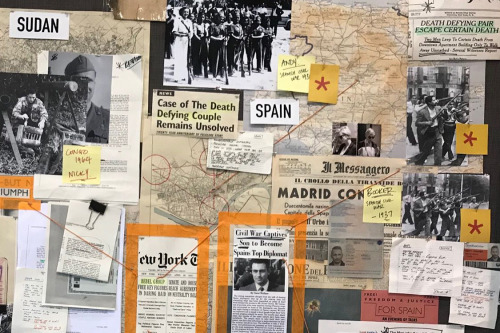

Jumping forward a bit here, but I can’t believe I found this photo, like I wasn’t even looking for it and I found it, but still. Wow. So on the board, it’s shown that Nicky was in the Congo in 1964 during the Simba Rebellion. The original image is of mercenary Gerry Moggach, from Scotland, with self-made guns (Molotov cocktails lmaoo) in November 1964. The Congo Crisis was a period of political upheaval and conflict in the Republic of the Congo (which is now the DRC) and involved a bunch of civil wars that also served as a proxy conflict in the Cold War.
Now, back to Spain and the rest of the guard. From this BTS image of Copley’s sociogram we know that both Booker and Andy were involved in the Spanish Civil War as well. The first image, which Andy is apparently in, was taken in 1936 and shows her with a miliciana, which were battalions of woman who fought to defend the Republic. The photographer is unknown. The second image is of Republican soldiers and civilians. Booker is in this image. The original was taken in 1937 by an unknown photographer.

Now we get into the World War II photographs. This photo of Booker from WW2 was originally taken at Mount Tambu, New Guinea in July of 1943, by Gordon Short. The photo is of Leslie “Bull” Allen, an Australian soldier who was awarded the US Silver Star for rescuing 12 US soldiers while under fire. The battle was fought between Japanese and Allied forces. Australian forces eventually secured the area in August of that year.

This photo frustrates me. First, it doesn’t even look like they manipulated it, but also because “pacific” is written in the near the bottom right corner. Now, I’m not saying that Nicky wasn’t in the Pacific Theatre but now that I know where this image was actually taken it’s like. Ugh. This photo was not taken in the Pacific Theatre, it was taken of American soldiers at Omaha Beach on D-Day, June 6, 1944. Omaha was the codename given to one of the five sections during the Allied invasion of Normandy. D-Day is the largest seaborne invasion in history, and it eventually led to the liberation of France and the Allied victory on the Western Front. Now personally, I think Nicky being there is very interesting and the timeline meets up better with his other WW2 picture. If you’ve ever seen Saving Private Ryan (1998), that movie opens with the invasion of Omaha Beach.

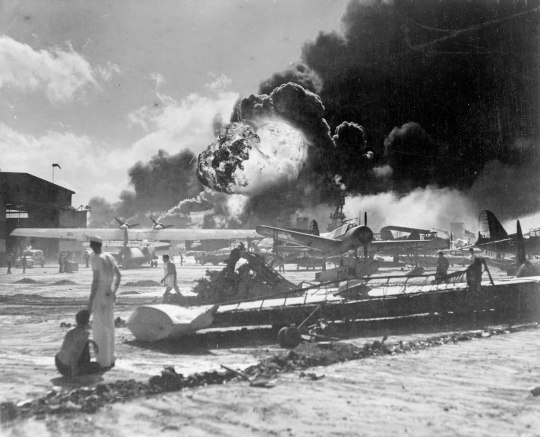
This photo of Nicky excites me for several reasons but also brings up some important questions about what the fuck Nicky was up to in 1944. The original photograph shows Private G.R. MacDonald giving first aid to a French boy in Brionne on August of 1944. The interesting part for me is the uniform though. MacDonald was part of the Toronto Scottish Regiment (75th Battalion). The Toronto Scottish Regiment were actually part of Operation Jubilee, although they weren’t able to land because of the tide and only had one fatal casualty, which good for them considering what happened to everyone else at Dieppe. Although Nicky probably wasn’t a part of that considering he was with American soldiers earlier in 1944.
Next to Nicky, on the right, you can see a picture of a plane and an explosion behind it. That picture is from Pearl Harbor in December 1941. The picture is taken at the Ford Island seaplane base and you can see the USS Shaw (DD-373) explode in the center background. USS Nevada (BB-36) is also visible in the middle background, with her bow headed toward the left. Several planes are in the foreground, a consolidated PBY, Vought OS2Us and Curtiss SOCs. The wrecked wing in the foreground is from a PBY.

This photograph is of French resistance fighters and was taken in September of 1944. The French resistance was a movement that fought against the occupation of Nazi Germany after 1940. The resistance engaged in guerilla warfare, published underground newspapers, acted as spies for the Allied forces and kept up escape networks for trapped soldiers and airmen. Although the woman in the original picture isn’t identified, there were many other women involved with the French resistance like Simone Segouin, Marie-Madeleine Fourcade, Lucie Aubrac, and Marie-Hélène Lefaucheux.
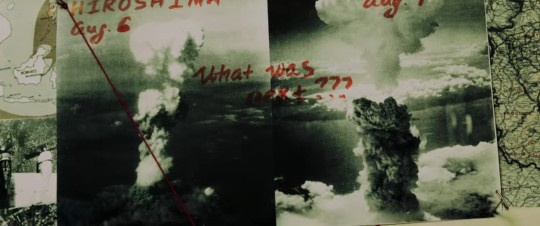

The first image is of a Boeing B-29A-45-BN Superfortress 44-61784 6 Bombardment Group G 24 BS. It was taken in June of 1945 while it was firebombing Osaka, Japan.
The next two images are of the smoke from the atomic bombs. The first picture is of the mushroom cloud over Hiroshima and was taken by George R. Caron on August 6th, 1945. The second image shows the cloud over Nagasaki and was taken by Charles Levy on August 9th, 1945.

Okay, so this is my absolute fav manipulation in the whole movie, because it looks so good. Here we have Nicky, Joe and Booker as guerrillas during the Cuban Revolution. If you saw this image and thought “wait is that Fidel Castro?” you’d be right! The man gesturing to the ground with a stick is in fact Fidel Castro. Now, what you might have missed is the man next to Castro who has been edited to look like Booker... yeah I’m like 95% sure they put Booker’s face on Che Guevara.

This image of Nicky during the American Civil Rights Movement is from the March on Washington which happened in August of 1963. 250,000 people gathered at the Lincoln Memorial to call for fair treatment and equal opportunity for Black Americans. This is where Martin Luther King Jr. delivered his “I have a Dream” speech.

This picture of Andy, Joe and Nicky is of Martin Luther King Jr’s speech at UC Berkeley in May of 1967. The speech was attended by about 7000 students and he spoke against the Vietnam war. Photograph by Michael Ochs (?)

This photo was taken of US soldiers in Huế during the Vietnam War. The photo was taken in 1968 during the Tet Offensive. Booker is the one behind the medic. There’s a post it note that you can see fully in a BTS image of the sociogram that confirms it’s Booker. The Tet Offensive, which was launched in January of 1968, was one of the largest military campaigns of the Vietnam War, and the largest up to that point. It was a campaign of surprise attacks by the VC and PAVN against military and civilian command and control centers in South Vietnam (ARVN and the USA). The Battle of Huế lasted over a month and resulted in the destruction of the city and the massacre of thousands of civilians.

This photo of Andy helping with Operation Babylift was originally taken in 1975. Operation Babylift was an evacuation of orphans from Saigon in the face of a North Vietnamese Offensive. 3000 orphans were evacuated and at the end of April, Northern Vietnamese forces launched rockets at Saigon.

This image of Andy shows her on the Berlin Wall. The original photo was taken near the Brandenburger Tor in November of 1989. The photo shows West Berliners helping East Berliners climb the Berlin Wall after the opening of the wall was announced by the East German Communist government. The photo was taken by Jockel Finck.

tw ethnic cleansing, tw islamophobia, tw genocide. The photos of Booker in Bosnia and Herzegovina as a combat medic indicate that Booker was in Sarajevo for the Siege of Sarajevo during the Bosnian War, however the original photo was taken of the Cheshire Regiment (1st Battalion) in Ahmići, in April of 1993. The Ahmići Massacre was committed by the Croats during the conflict and was part of a larger series of attacks called the Lašva Valley ethnic cleansing, and targeted Bosnian Muslim civilians. Around 120 people were murdered in Ahmići.


These last images are all from wars within the last 20 years. The first image was taken in Daychopan, Afghanistan by Sgt. Kyle Davis in September, 2003. The photo is of Company A, 2nd Battalion, 22nd Infantry Regiment, 10th Mountain Division. They were searching for Taliban fighters and weapon caches.
The next image is of two aerial photos of the ISIS command and control Centre in Syria, before and after it was bombed by a US F-22 fighter jet in September 2014.
The last image is of a US soldier assisting a wounded Iraqi civilian in Fallujah, Iraq in November, 2004. Photograph was taken by Cpl. Theresa M. Medina.
As for the rest of the photos, (Joe and Nicky saving the man in the cave, Joe in the DRC, some WW2 photos and some background photos in the BTS images and during the movie) I haven’t been able to find them because they’re not clear, I don’t want to look at historical archives anymore or I don’t even know where to start with searching for them. I might pick up searching again later if I decide to become even more like Copley than I already am. If you have any additional info about some of the missing photos let me know! Also if you want any of the original photos or resources just let me know and I can send them to you!
edit: I just want to make this very clear, but some of TOGs involvement here is suspicious as hell. Obviously we don’t know the exact circumstances, but things like Nicky being shown as a mercenary during the Simba rebellion, Booker as an American soldier during the Vietnam War and the images of US soldiers in Iraq and Afghanistan have some incredibly negative and incriminating implications. I worry that in my excitement about finding some of these images I glossed over pretty horrific details and context. It’s important to be conscious of some of the very real tragedies and atrocities being shown here.
#the old guard#Andromache the Scythian#Yusuf al Kaysani#Nicolo di Genova#the old guard meta#tog meta#tog posts#Sebastien Le Livre#long post#tog history#also i will say#if anyone does want to track down the original joe in the congo pic#please look after yourself#i stopped trying to find it because going through pictures from the DRC can be very disturbing#i think it's also worth noting that in terms of the context of each image i decided to go for picture specific#while leaving the broader cultural context more vague#like i'm not about to explain the crimean war or the congo crisis on this post#this is just a jumping off point about certain events!! do your own research too!!#also lmaooo do you know who was also in the congo in the 1960s? fucking che guevara#i am also like 80% sure the cave rescue picture was staged#i simply cannot find it#anyway now that this is done comparative timeline drops soon
518 notes
·
View notes
Link
happy 200th birthday, queen.
edit: the text, for anyone under paywall (below the cut):
Toward the end of her life, the opera diva Pauline Viardot took stock of her vast social network. She wrote a three-page, multicolumn list of everyone she had ever met, worked with or loved.
She ended up with over 300 names, a who’s-who of 19th-century icons: composers like Rossini, Liszt and Schumann; novelists like George Sand, Victor Hugo and Ivan Turgenev, her lover; Giuseppe Mazzini and Napoleon III.
Viardot entertained many of them at the weekly salons she held at her home in Paris. Classical musicians have rarely connected so widely with important figures of the day; the closest American parallel might be Leonard Bernstein, who hobnobbed with presidents and Hollywood glitterati.
But like Bernstein, Viardot — born exactly 200 years ago, on July 18, 1821 — was far more than a Zelig. One of the supreme singers of her time, she was also a prolific composer, whose music is slowly being salvaged from obscurity; a savvy entrepreneur; a gifted visual artist; and a highly respected voice teacher.
Born Michelle-Pauline-Ferdinande-Laurence Garcia, in Paris, Viardot was an heir to a musical dynasty. Her father, Manuel Garcia, was an international opera star and the first Count Almaviva in Rossini’s “The Barber of Seville.”
Born in Spain, Garcia never stayed in one place for long, moving his wife and three children — Viardot’s older sister, Maria Malibran, became another of the century’s reigning divas — to Italy, Paris and London. And then in 1825, when Viardot was 4, to the United States, where his family and troupe introduced Italian operas, sung in their original language, to the American public.
Viardot’s musical talents emerged early. She took piano lessons with Liszt and developed a girlhood crush on him. As a young woman, she played duets with Chopin, a friend. But when she was 15, her mother dashed her dreams of becoming a concert pianist, declaring that Pauline would pursue the family trade: singing opera.
She made her debut in 1839 in London as Desdemona in Rossini’s “Otello,” then hit her stride four years later when she brought the house down at the Bolshoi Theater in Moscow as Rosina in “The Barber of Seville.”
“Ravishing, velvetlike notes rang out, of the sort that no one, it seemed, had ever heard,” an audience member later recalled, adding, “Instantly an electric spark ran round the audience.”
When she was 18, she met and married the historian, art critic and theater director Louis Viardot, 21 years her senior. In a reversal of gender norms, he resigned from his post as director of the Théâtre Italien in Paris after their wedding to focus on Pauline, her career and, ultimately, their four children.
With a voice of uncommon range and flexibility, Viardot became famous on Europe’s major stages in signature roles that included Zerlina and Donna Anna in “Don Giovanni,” Adina in Donizetti’s “L’Elisir d’Amore” and the title role in Bellini’s “Norma.”
“Her technical skill alone is immense; in the completeness of her chromatic scale she is, probably, without a rival,” said an article published in Fraser’s Magazine, a London journal, in 1848.
But, the writer went on, “the principal feature which characterizes her is the dramatic warmth of her impersonations. She throws herself heart and soul into a part.”
Composers sought her out for important premieres: She was the first Fidès in Meyerbeer’s “Le Prophète” and Charles Gounod’s first Sapho. When Berlioz resurrected Gluck’s “Orfeo” for the Parisian stage in 1859, Viardot was the diva for whom he rewrote the title role. A decade later, Brahms chose her as the soloist for the premiere of his Alto Rhapsody.
After retiring from the opera stage in 1863, Viardot continued singing in concerts and being what we’d call today a macher. She owned the original manuscript of Mozart’s “Don Giovanni,” which composers including Fauré and Tchaikovsky made pilgrimages to see. In 1869, she wrote an effusive letter to Richard Wagner congratulating him on a performance of “Die Meistersinger.” But his notorious anti-Semitic essay, “Judaism in Music,” published under his name the following month, soured the relationship, and Wagner and his wife, Cosima, began referring derisively to Viardot as a “Jewess.” (She was not Jewish.)
Following her father, who was a gifted composer as well as a brilliant singer, Viardot put significant time and energy into composing. Her work is not nearly as widely known as that of Robert Schumann, Liszt, Saint-Saëns or others in her social circle. But her music was deeply appreciated by her contemporaries, with one person going so far as to compare her talent to Schubert’s. Clara Schumann referred to her as “the greatest woman of genius I have ever known.” A fierce advocate for her students, she died, just a month shy of her 89th birthday, in 1910.
Today, her works are enjoying a resurgence among scholars and performers — part of a wave of interest in long-neglected composers like Amy Beach, Florence Price, Clara Schumann and others.
Viardot wrote hundreds of pieces, the majority of them songs for solo voice and piano. Her first was “L’Enfant de la montagne,” published when she was just 19 in a collection organized by Meyerbeer, Paganini and Cherubini. Like so many of her songs, she was its major advocate, using it to show off her vocal skills in concerts in Leipzig, Germany, and other cities.
Her songs have more recently become popular fare for prima donnas including Annick Massis, Cecilia Bartoli and Aude Extrémo. They range from playful and virtuosic (“Vente, niña, conmigo al mar”) to hauntingly beautiful (“L’Enfant et la Mère” and “Hai luli”). The publisher Breitkopf und Härtel has released a new critical edition of some of the songs on texts by Pushkin, Fet and Turgenev. (Viardot’s Russian was superb.) She also wrote works for piano and violin, the instrument of her son, Paul Viardot. Her other three children, also musicians, performed her compositions, too.
True to her specialty, Viardot also wrote operas. These were mostly performed by her students and children in her home, with piano accompaniment, but at least one, “Le Dernier Sorcier,” was orchestrated and performed in 1869 in Weimar Germany.
Wolf Trap Opera in Virginia has revived her “Cendrillon” just this weekend. Viardot wrote both the music and words for this chamber operetta about Cinderella, a fanciful interpretation of the fairy tale by Charles Perrault.
“Her music is both challenging and wonderfully singable,” Kelly Kuo, the production’s conductor, said in an interview. “You just know that it was written by someone who really understood what she was doing.”
Among the guests at the 1904 premiere of “Cendrillon” were the editor and musician Salvatore Marchesi and his wife Mathilde, an influential voice teacher. Finding Viardot’s music charming, they wrote of their certainty that it would have “a successful run through the world.” Although somewhat delayed, their prediction is perhaps beginning to come true.
“Viardot,” Kuo said, “is a perfect example of an artist who should be much better known today.”
#Pauline Viardot#Pauline Viardot-Garcia#happy birthday#composers#women composers#classical music#opera#opera tag#divas#a true queen
23 notes
·
View notes
Text
Memoirs, Diaries, and Journals
I had an older post about memoirs, but time for an update
Memoirs of Baron Lejeune - READ ABOUT MY MAN. DO IT!!!!!! I just think Lejeune is rather relatable and very entertaining due to his being an artist and he has a bit of a sense of humor. Is mostly accurate as far as I know (but I've only been learning all about the Napoleonic Era in like a year and half of that was focused entirely on aesthetic, so I am surely not as in-depth as others), but sometimes misspells people's names (granted, some people didn't even spell their own names consistently back then). The English translator calls him out on mixing up buildings, but not on his "and they all clapped" story about being so attractive he got a Spanish crowd to go from wanting to kill him to cheering for him and even his donkey was happy. Lejeune thinks having audacity is great, and I guess that applies to his lying too. lol
Campaigning for Napoleon - Tascher and the no good very bad time in the Napoleonic wars. Tascher died before the war was over and so he never got the chance to go back to edit much of it so it is rather stream of consciousness. Not like a "fun" read, but also not embellished via being written by a man reminiscing about 10-30 years ago. Definitely written by a somewhat grumpy fellow, though.
The Memoirs of Baron De Marbot - I just couldn't get through him. WHAT DO YOU SEE IN HIM, ARTHUR CONAN DOYLE. (I don't think Brigadier Gerard is as cool as Doyle thinks either) Might try again to read it later. He gets mentioned a lot by other people so I feel like I should read him. But I am also told Marbot can be a bit of a liar.
The Diary of a Napoleonic Foot Soldier - I didn't find this one particularly interesting in that I have basically forgotten if there was anything notable about it....I don't even remember the guy's name without needing to look at the book. But it is easy to get through because it's rather short.
Military Life under Napoleon: The Memoirs of Captain Elzear Blaze - Basically a collection of anecdotes about everything. I find it particularly useful in terms of writing inspiration for my stories. The guys named Topinambour and Betterave can live rent free in my head lol
I measure Memoir interest in terms of if I fill the book with an excessive amount of post-its and Lejeune and Blaze are like the no-contest winners of that and I'm not even done with Blaze and vol 2 of Lejeune.

Still on my "To Read" List
Memoirs of a French Napoleonic Officer: Jean-Baptiste Barres, Chasseur of the Imperial Guard
In the Peninsula with a French Hussar
The Cavalry Maiden
Larrey’s memoir
Fighting for Napoleon French Soldier’s Letters 1799-1815
A Boy Soldier in Napoleon's Army
6 notes
·
View notes
Text
It’s almost Yuletide! This will be my 18th Yuletide! My first Yuletide story will be old enough to vote this year and I have some mixed feelings about that! But also I have never missed or defaulted on a Yuletide since, and I have to say I feel pretty proud of that.
I am still pretty far down the Les Misérables rabbit hole (speaking of which, it is not too late to propose programming for Barricades!), and unsurprisingly all the fandoms I'm nominating/requesting this year are set in July Monarchy France--Les Mis canon era: Petit-Cénacle RPF,
Champavert: Contes Cruelles | Champavert: Immoral Tales - Pétrus Borel, and Les Enfants du Paradis | Children of Paradise.
Petit-Cénacle RPF
The Petit-Cénacle was a French Romantic salon, slightly younger and considerably more politically radical than the Cénacle centered on Hugo and Dumas; it included painters and sculptors as well as writers and critics, and most of its members at least dabbled in both written and visual arts. Its best-known members today are Théophile Gautier, Gérard de Nerval, and Pétrus Borel (the Lycanthrope)--the last two are thinly fictionalized in Les Misérables as Jean Prouvaire and Bahorel. (It's debatable how much Grantaire owes to Gautier but it's probably a nonzero amount.)
The group coalesced around Borel and Nerval as the organizers of the Battle of Hernani--a fight between Romantics and classicists at the premiere of Victor Hugo's play Hernani in 1830. Most theater productions at this time had claques--groups of paid supporters of a show or an actor, who were planted in the audience to drum up applause. For Hernani--the first Romantic work staged at the prestigious Comédie-Français, which broke classical norms so thoroughly that it no longer seems at all transgressive--Hugo and the theater management decided they were going to need more than just a claque. They recruited a few of Hugo's fans--Gautier was so star-struck he had to be physically hauled up the stairs to Hugo's apartment--to stage An Event. The fans recruited their friends. They showed up in cosplay, with the play already memorized and callback lines devised. It was basically the Rocky Horror Picture Show of its day. It almost immediately turned into an actual fight, with fists and projectiles flying. And it made Hernani the hottest ticket in Paris.
This is the group's origin story, and they pretty much spent their lives living up to it. They were every bit as extra as you would expect--Nerval allegedly walked a lobster on a leash in the Champs-Elyseés, explaining that "it knows the secrets of the deep, and it does not bark"--but they also stayed friends all their lives, often living together, supporting each other through poverty and mental illness and absurd political upheaval.
I'm nominating Pétrus Borel | Le Lycanthrope, Théophile Gautier, Gérard de Nerval, and Philothée O’Neddy; you could nominate other people like Jehan Duseigneur, Celestin Nanteuil, or the Deverias, or associates of the group like Dumas and Hugo.
The Canon
Gautier's History of Romanticism covers the early days of the group and the Battle of Hernani in some detail. (There is also a 2002 French TV movie, La bataille d'Hernani, which is charming and pretty accurate; hit me up if you want a copy.)
Other than that--this crowd wrote a lot, and they're all very present in their work--even in their fiction, which is shockingly modern in a ton of ways.
For Gautier, Mademoiselle de Maupin has a lot of genderfeels, surprisingly literal landscape porn, and a fursuit sex scene in chapter two.
If you want Nerval's works in English, you might be limited to dead-tree versions, but I highly, highly recommend The Salt Smugglers, a work of metafiction that answers the question, "What if The Princess Bride had been written in 1850 specifically to troll the press censorship laws of Prince President Louis-Napoleon Bonaparte?"
Borel's experimental short story collection Champavert has a new and very good English translation by Brian Stableford and is also my next fandom :D.
Champavert: Contes Immoraux | Champavert: Immoral Tales - Pétrus Borel
Last year I requested Borel RPF but I decided this book was unfanficcable. This year, I am going to have a little more faith in the Yuletide community.
Champavert, available in ebook and dead tree form, is a weird as hell little book and probably the best thing I read last year. It's an experimental short story collection from 1830. Someone on one of my Les Mis Discords described it as "a collection of gothic creepypasta, but the author is constantly clanging pots and pans together and going 'JUST IN CASE you didn't notice, the real horror was colonialism and misogyny all along and i'm very angry about it!'"
And, yeah, pretty much that, with added metafictional weirdness, intense nerding about architecture and regional languages, and the absolute delight that is Borel's righteously ebullient voice.
Borel wrote for a couple of years under the name of The Lycanthrope, and though he kills the alter ego in this book, the name stuck, and would continue to be used by friends and enemies alike all his life. Pretty much everyone who met Pétrus agreed that 1) he was just ungodly hot; 2) he was probably a werewolf, sure, that makes sense; and 3) he was definitely older than he claimed to be, possibly by centuries, possibly just immortal, who knows.
But, like I said, he kills the alter ego in this book: it begins with an introduction announcing that "Pétrus Borel" has been a pseudonym all along, that the Lycanthrope's real name is Champavert--and that the Lycanthrope is dead and these are his posthumous papers, compiled by an unnamed editor; the papers include some of Borel's actual poems and letters, published under his own name. The final story in the collection is called "Champavert, The Lycanthrope," and is situated as an autobiographical story, following a collection of fictional tales--which share thematic elements and, in the frame of the book, start to look like "Champavert"'s attempts to use fiction to come to terms with events of his own life.
And that's probably an oversimplification; this is a dense little book and it's doing a lot.
The subtitle is Contes Immoraux. It's part of a genre of "contes cruelles" (and, content note for. Um. A lot), but it's never gratuitously cruel--it's very consciously interrogating the idea of the moral story, and what sort of morality is encoded in fables, and what it means to set a story where people get what they deserve in an unjust world where that's rarely the case.
I'm nominating the unnamed editor, Champavert, his friend Jean-Louis from the introduction and the final story, and Flava from the final story; you could also nominate characters from the explicitly fictional stories.
Les Enfants du Paradis | Children of Paradise
This is a film made between 1943 and 1945 in Vichy and Occupied France and set...somewhere?...around the July Revolution, probably, I'll get into that :D. There's a DVD in print from Criterion and quite possibly available through your local library system. (And it's streaming on Amazon Prime and the Criterion Channel.)
It's beautifully filmed, with gorgeous sets and costumes and a truly unbelievable number of extras, and some fantastic pantomime scenes. (On stage and off; there's a scene where a henchman attempts to publicly humiliate a mime, and it goes about as well as you would expect.)
"Paradise," in the title, is the equivalent of "the gods" in English--the cheap seats in the topmost tier of a theater. It's set in and around the theaters of the Boulevard du Temple--the area called the Boulevard du Crime, not for the pickpockets outside the theaters but for the content of the melodramas inside them.
The story follows a woman called Garance, after the flower (red madder), a grisette turned artists' model turned sideshow girl turned actress turned courtesan, and four men who love her, some of whom she loves, all of whom ultimately fail to connect with her in the way she needs or wants or can live with.
This sounds like a setup for some slut-shaming garbage. It's not--Garance is a person, with interiority, and the story never blames her for what other people project onto her.
Of those four men, one is a fictional count and the other three are heavily fictionalized real people: the actor Frédérick Lemaître, the mime Baptiste Deburau, and the celebrity criminal Lacenaire. Everyone in this story is performing for an audience, pretty much constantly, onstage or off: reflexively, or deliberately, or compulsively.
Garance's survival skill is to reflect back to people what they want to see of themselves. She never lies, but she shows very different parts of herself to different people. We get the impression that there are aspects of herself she doesn't have much access to without someone else to show them to. Frédérick is also a mirror, in a way that makes him and Garance good as friends and terrible as lovers--an empty hall of mirrors. He's always playing a part--the libertine, the artist, the lover--and mining his actual life and emotions for the sake of his art. Baptiste channels his life into his art as well, but without any deliberation or artifice--everything goes into the character, unfiltered. It makes him a better artist than any of the others will ever be, but his lack of self-awareness is terrifying, and his transparency fascinates Garance and Frédérick, who are more themselves with him than with anyone else. Lacenaire, the playwright turned thief and murderer, seems to no self at all, except when other people are watching. Against the performers are the spectators: the gaze of others--fashion, etiquette, and reputation--personified by Count Mornay; and the internal gaze personified in Nathalie, an actress and Baptiste's eventual wife, who hopes that if they observe the forms of devotion for long enough the feeling will follow.
The time frame is deliberately vague--it's set an idealized July Monarchy where all these people were simultaneously at the most exciting part of their careers. In the real world, Frédérick turned his performance of Robert Macaire into burlesque in 1823, Baptiste's tragic pantomime Le Marrrchand d’Habits! ("The Old-Clothes Seller") played in 1842, and Lacenaire's final murder, for which he is guillotined, is 1832; these all take place in Act II of the movie within about a week of each other.
(Théophile Gautier, mentioned but tragically offstage in the film, was a fan of Baptiste; Le Marrrchand d’Habits! started as Gautier's fanfic--he wrote a fake review of a nonexistent pantomime, and the review became popular enough the Theater des Funambules decided to actually stage it. It only ran for seven performances.)
I am nominating Garance, Frédérick Lemaître, Baptiste Deburau, and Pierre François Lacenaire. You could nominate any of the other characters (Count Mornay, Nathalie, the old-clothes seller Jéricho, Baptiste's father, his landlady, Nathalie's father the Funambules manager). Gautier, regrettably, does not actually appear in the film but you can bet that's going to be one of my prompts.
So, that's one good movie you definitely have time to watch before signups, several good books you probably have time for and that are probably not like whatever else you're reading right now, and one RPF rabbit hole to go down! Please consider taking up any or all of these so that you can write me fanfic about Romantic shenanigans.
#yuletide#crosspost from Dreamwidth#petit-cenacle#champavert#children of paradise#les enfants du paradis#petrus borel
5 notes
·
View notes
Text
the other van gogh
part 4 of: atelier heart
ikemen vampire: temptation in the dark
theodorus van gogh / mc, theo & vincent | gen | 2403 | [ao3 in bio]
spoiler warning: this fic references scenes from theo’s main route chapters 3, 8, and 18.
You’d heard about Theo before you’d gone to the mansion.
Not by name, no, not by history either. You’d gone to museums with Vincent’s paintings and had read a few descriptions of historical context here and there but for the most part you had heard about his brother with a peculiar moniker.
The Other van Gogh.
When you’d met him that night at the mansion, the roots of guilt began to implant itself into your heart. And with every second you spent with Theo afterwards, knee-deep in his work, the guilt had birthed in its wake curiosity—as to why he was known for his brother, and not for whatever he had done on his own.
Why Arthur would not stop with his brother-complex jokes. Why everyone thought this was normal. Why no one asked questions—why this was just fact.
What did they know that you didn’t? What made Vincent mean so much to Theo to begin with?
Of course, the kind of brotherly connection and support that siblings do have isn’t really news to you, but you could see at a glance that this was different. That they weren’t just brothers, they were partners, and it seemed that Theo derived so much meaning in his life from Vincent’s existence, like he couldn’t hold himself up if not for his older brother.
But why?
If there is anything the passing of time has taught to its scholars, whether they are the ones spending unending hours and days and years in libraries, cooped up, comparing texts from each other, extracting and analysing and cross-referencing, or if they are the ones who are constantly out on the field, making notes, remembering everything, writing everything down to memory—it is that nothing, nothing, can ever truly be captured in its full historical detail. There are always things that will be missed, overlooked, misunderstood, things that no amount of work on history will ever be able to recover.
That is the weakness of the human perspective. Not everyone will write these histories, and there will be many, many experiences that will never be known.
Theo’s, perhaps, is included in those.
You don’t have much knowledge in history to begin with, but the guilt of not having recognized that first night in the banquet continued to gnaw at you, worsening now that you’re spending even more time with him compared to everyone else, and yet you still feel like you knew even less than you started with.
You have an argument, but even to you, it is weak: that the rest of them are pretty much names you would not have been able to escape in the 21st century educational system. Isaac Newton, of course, the discoverer of gravity. Jean d’Arc, the great martyr. Leonardo da Vinci, with his paintings and sculptures. Wolfgang Amadeus Mozart, whose songs you started humming in childhood. William Shakespeare, sometimes called the greatest writer in the English language. Napoleon Bonaparte, perhaps one of the greatest military commanders in history. Arthur Conan Doyle, the author of the famous Sherlock Holmes. And even Dazai Osamu is pretty recognized as an author too, as far as you knew. And Vincent van Gogh—of course, one of the most renowned artists in the world.
But Theo?
While Vincent was a myth, Theo remained largely untold.
Look, you weren’t a history scholar, and considering your work back in the 21st century, this kind of knowledge was and is entirely out of your radius of practical information. You really didn’t have much reason to know about it. It’s just a niche that you’re not in. And that’s entirely fine, you tell yourself, no single human ought to know everything about the world—except, perhaps, if you’re Leonardo da Vinci, who seems to have an answer for everything, but that was beside the point.
For the longest time, these missing bits of his history left unknown to you, matched with the fact that Theo isn’t exactly the kind of person who is easy to get to know, made your efforts of really, really doing your best to get closer to him feel like you were instead making friends with a wall.
A tall, handsome, strong, passionate, smart, ocean blue-eyed, ridiculously rude wall, but a wall nonetheless.
Or a closed door.
Until Vincent opened it for you.
-
It was in response to your bewilderment. When one is a sadist and the other one is an angel, it is easy to wonder how they would be related. The day you go out to the flower fields to deliver painting supplies to Vincent is the day he tells you that “I know Theo’s easy to misunderstand, but he’s a really nice kid, so please be friends with him okay?”
And while the instinct is to say no thanks, Vincent’s not exactly the person you can say no to, so you let it go. And on that very same day Theo had allowed you to see a part of him, one you wondered if he ever really ardently shows anyone else, talking about sunrises and the art world and what he can do. What he wants to do. A little glimpse, a peek of what’s hidden inside, but not enough—barely enough—to satiate your own curiosity.
And you, silly, silly little hondje—Theo is right when he says you don’t know just how much trouble you walk into—you take this little curiosity as a challenge.
So you watch.
Watch what history has missed.
-
Mastering the art of looking at art with a critical eye is one that is honed over time. But with a teacher both as strict and as passionate as Theo, it is a skill that you quickly pick up. Learning the implications of certain gestures; the observation of the tiniest details; the effects of colors; of sharpening one’s gut.
You thought it would be hard.
Or at least, much easier said than done, especially when the man frustratingly keeps calling you dog or snack or any variation of the both of that when he only has miles and miles of praises for his older brother. You were, are, and will obviously be at an entirely different level than Vincent for as long as you will be here. (Not that you minded. Why would you mind it?)
But it isn’t hard at all.
It’s rather easy.
The easiest things to see are their differences. Of course—it’s always like that. That’s exactly why it’s so easy to misunderstand Theo at face value. Where Vincent’s smile is sunny and warm, Theo has a glare that makes flowers wilt. While Vincent likes his pancakes plain and with butter, Theo can get thirty lifetimes worth of sugar for the amount of syrup he puts on his pancakes. Where Vincent is approachable and perhaps a little airheaded, Theo is guarded, distrustful, wary. While Vincent’s words are soft and kind and gentle like wildflowers are, Theo has the formality of roses but also their barbs and thorns.
But the days turn into weeks and your eyes get trained to see past that. Get used to seeing the gentle rays of sunlight illuminating their irises when they look back at each other, talking about art. Vincent sees the softest sides of Theo, see where his thorns give way to flowers, where his distrust smooths into blind faith.
And you want to see that too.
So you practice.
Start with catching the little details like how Theo walks with his hands in his pockets. Or the way he casually adjusts his tie right before he enters a room before a meeting with a client like he’s psyching himself up. Or maybe the way he bites the inside of his cheek when he’s deep in thought, the lines that form on his forehead when he’s squinting so hard at a painting through his magnifying glass. Or the little tug of a smirk he cannot resist when he gets complimented, the one he so subtly and ever so quickly washes away with a neutral face in a second.
Then you catch other things, too. Like how if you matter any single bit to Theo, you can get him to do pretty much anything, bending himself backward over if you ask him. How he pays attention to things that matter to him, down to the littlest detail, like an artist’s changing focus, a shift in style, a change in technique. And how Theo has a dream and it’s one of the only two things he really, really believes in. (The other is his brother.)
You thought it would be impossible to see Theo through Vincent’s eyes, but.
Eventually you do.
You don’t know where it begins, but it begins somewhere. Maybe on that evening you’d gone up the atelier and seen the candlelight shine on his prideful, confident boyish grin, as if he knew all the answers for certain. Or maybe it was later, standing in the garden laughing because how is it that Theo van Gogh, so strong and imposing and scary is now pinned onto the grass with the most playful golden retriever you have ever seen?
But that’s the important part. You start seeing it.
The same way Theo could tell the painting was a fake at first glance that morning at Cedric’s.
And the wall is still tall and opaque and hard to climb but—
You can sort of see the sunlight peering over it.
-
On the day of the storm, in between antiseptic and rolls of gauze, silence permeates the library like a dense fog. The only sound you can really quite hear besides the thunder outside is your thumping heart, racing as if in time with Theo’s labored breathing.
There are too many questions to ask. You want to ask him why he does all of this. You want to ask him if it is worth it. And you don’t know the order in which to ask them, which ones are the ones you have to hear, but you do.
Theo, for a brief moment, opens up to you.
Allows you to see the red of his wounds and his roses. See the garden, not his thorns.
But before the two of you could head out to your rooms, to go back to bed and pretend none of this had happened, you hold the first-aid kit in your hands and turn to him, already putting his bloodied jacket on, and ask the question you had long feared asking, the one whose answer you worried you really didn’t deserve knowing.
You ask, “Why is it that you’re so fixated on Vincent?”
There’s a moment of held-breath silence, then Theo answers.
“Because I made a choice that day, and he is all I have left.”
-
The next day, you catch Vincent in the garden painting. You hesitate at the doorway wondering if you should interrupt him, but eventually decide that this is something you ought to tell him, out of respect.
“I wanted to say sorry,” you say, sitting next to him on the grass. Vincent turns to you with confusion in his eyes.
“What about?”
“When we were at the flower fields, and I asked you and Theo if you were really brothers—I thought about it a lot the past few days, and I think finally see what you mean,” you say. “About Theo.”
Vincent smiles, the smile of someone who knows more than they let on.
-
(A lifetime ago, in the middle of a seaside town when everything was falling apart around him, Vincent had only one person holding him up, and that was his brother. They were young then—but felt much too old, older than they were. Youth was not gentle with them, and for the most part they spend much of their lives making up for times they spent less kind to one another. Dreaming for the children they used to be, the ones they would have wanted to nurture, but cannot anymore.
The seaside town where their paths were linked and then diverged. They were teenagers, walking alongside the mill, hiding in stockrooms, listening to the crash of the waves against the Dutch shores.
And a full lifetime ago, long after they’d grown out of the old family home, Vincent had taken up his pen and had written to Theo:
We’re quite distant from one another, and in certain respects we may have different ways of seeing, but nevertheless, sometimes or some day one of us might be able to be of use to the other. For today, I shake your hand, thanking you again for the kindness you’ve shown me.
The salt in the air, the gray paths, the winding roads, they all remain.)
-
If there is anything the passing of time has taught to its scholars, whether they are the ones spending unending hours and days and years in libraries, cooped up, comparing texts from each other, extracting and analysing and cross-referencing, or if they are the ones who are constantly out on the field, making notes, remembering everything, writing everything down to memory—it is that nothing, nothing, can ever truly be captured in its full historical detail. There are always things that will be missed, overlooked, misunderstood, things that no amount of work on history will ever be able to recover.
That is the weakness of the human perspective. Not everyone will write these histories, and there will be many, many experiences that will never be known.
And because of this the world might only remember Vincent after all. Might only remember he had a brother that stood by him but had nothing in comparison to the legacy of paintings that once were piled up in that said brother’s small Paris home. Might only think that the entire story only revolves around Vincent, and that there is only Vincent and then the other van Gogh.
The world might not know him by name.
But it’s okay.
You hold his face in your hands, that night he tells you he’s sworn to throw everything away for Vincent. The van Gogh that wasn’t the Other one. The name of the feeling you hadn’t wanted to put into words tasting like blood in your mouth.
Theo can do what he wants.
And the world can forget.
But you will remember.
And to at least one person—he will not just be the other van Gogh.
--
in the atelier: Two children on the beach by Pierre van Dijk

#ikevamp#ikevamp theo#ikevam theo#ikevam#ikemen vampire#ikemen vampire theo#atelier heart#fic#the other van gogh
34 notes
·
View notes
Text
IT’S STILL NOT FIXED? @#%&.$€£§?} Liberty Bell Take me Away!

"Ladies and gentlemen: the story you are about to hear is true. The names have been changed to protect the innocent”*
From me …”your time is your own when you retire.” Not exactly the case my friend, we will, all of us be captive to the throes of incompetence and being “shushed” by some in certain service business. The only thing you can do to maintain your sanity is to nestle up to your favorite barstool for the panacea when in pain and obtain sanctuary. This becomes problematic when your home away from home, the place where everyone knows your name, the place where the omniscient bartender has your required libation already poured when you cross the threshold … when this establishment has been closed for 1,193 days. Et omnis gloria eius…. The Liberty Bell.
The days since I announced my retirement in August 5, 2020; have for the most part, been pretty damn cool. I’ve started a website, a business, am a writing a book, am writing a blog that I plan to transfer into book form, I’m walking, I’m painting like crazy and have read around sixty books. All in all with honey do’s included, I’ve been a very good boy. Not everyday has been grand and nor should it. I can often find peaceful solace upon my lawn mower, lawn tractor, the throne of the most high to be the right balm for almost any emotionally taxing time; I’m pretty damned easy to please. For those that know me, I’m kind of Hank Hill about my lawn. Neatly cut on a weekly basis and verdant green, “I mean to tell ya!” OCD? You bet your ass I am… and I’ve got one of the best lawns on the block. My red, powerhouse mower had been “injured” for the last four weeks… scratch that SIX weeks which has reduced me to the bourgeoisie practice of paying some one to do my yard work. Not me, not ever… or at least not for long.

Without retreading over the bloody, battle ground of indignation, “the customer is always right,” “you need to understand sir,” blah, blah, blah yada, yada, yada, Yoda,” get over it you must?” I find my self like the French and the Germans at the Marne in World War I … at a stalemate. In times like these when a man, who realizes that deployment of WMD’S, would only escalate the matter beyond all reasonable proportion, he must know it’s time to lick his wounds, catch his breath and refresh himself at his neighborhood pub with tasty libations and good conversation. There was only one place in my town of Nacogdoches that could fully restore me with vim and vigor and had all the requisite charms to soothe the savage beast: The Liberty Bell Aug. 2013-May 2018.
As mentioned previously, I shall use pseudonyms to protect the identities of the people who were my superheroes. K opened the Liberty Bell in August of 2013. Kim and I thought we’d “try out the new spot,” and had dinner there the first weekend. K billed it as a wine bar with pub fare and live music. She underplayed her hand… pub fare? More like steaks, shrimp and grits, shepherds pie that transcended finger food pub fare. Over the years, we would enjoy countless bands and singer songwriters. But a wine bar? You sneaky little proprietor of manna and flowing nirvana… she had beer(s), bourbons, gins, vodkas, ….Scotch Whisky with names like Glenlivet, Glenfiddich, Maccallan , Johnny Walker R,B, and B, the Balviene and others. K had prepared and provided an oasis from what St. Anthony Bourdain referred to as the sea of TG Mcfuckdies, Appledon’ts, and other prefabricated restaurant grill ideas that could be found at the end of every feeder road on any highway in the country. The Liberty Bell my friends was something completely different… at least for us small town folk in Nacogdoches. Our first waitress was KC who showed all the charm, wit, and politesse one would expect from an high end dining establishment. This it wasn’t, but it damn sure wasn’t an all you could eat food buffet and salad bar either. As we exited that balmy August evening through the doors, Kim and I looked at each other and, with the stars gleaming in the sky declared, “we really like this place.” In truth, I was holding something back, in my mind and in my heart, I was really thinking, “no, I fucking love this place!”

The decor was simple: dark wood flooring, a mid tone oak bar with the all important brass railings, multi colored earth toned brick that appeared subdued and solid with the look of being an older establishment that gave a feeling of reliability and solidity. A row of draft beers that provided the patron with an eclectic variety of artistic fermented malt beverages. K was presenting a true farm to table dining experience that filled out a fresh, fantastic menu. An eclectic mix of your American staples, southwestern fare, delicious steaks for we carnivores and a few surprises thrown in and expertly prepared.
H worked for K and was the kindest sweetest, fun, personable soul I may have ever met. It was a definite, “YES!” moment if you got her table. You were not only going to get wined and dined, but we’re guaranteed laughter and a hug. Choosing extraordinary personnel, was the magic intangible that made the Liberty Bell … my spot. H was also a fine arts major and ran the art gallery in the restaurant. There were many works from the university Art school, but H sought out local talent and even displayed my art. My paintings were hanging in a gallery! This local flair of coxing the locals to put their talents “out there,” was another draw to get you into this place…this wondrous place. We made friends there … that enjoyed you … not just because you were going to spend money. They would come and sit with you if things were slow and if they weren’t slow, they’d damn sure make the superhuman effort to let you know that they knew you were in house. The master of this service industry art form was J. He was genuinely happy to see you enter the door followed with a hand shake, a smile and a from the heart, “good to see you man!” J and later his protégée N, loved a challenge. You wanted a special nightcap to close out the evening? There was none of this, “duh, I’m sorry we don’t make that,” no, no my friend. J and N knew how to make it or would research right there or suggest a perfectly acceptable substitute. The next week you could safely bet the farm that your drink request was on the menu often being named after you. How could you expect anything better? They wanted you here and they damn sure wanted you back.

All of these niceties, these actions that you could never expect from the chain bar, grill and swill were what made The Liberty Bell transcendent.
“A good local pub has much in common with a church, except that a pub is warmer, and there's more conversation. ”
William Blake
This my friends is the money shot for a personal pub…. not the drinks, not the grub, not the large plant by the door… can the place that you’ve chosen really lift you up when your down? If the whole week has been filled with smart ass criticisms by some passive aggressive mid management flunky who hovers around 5’ 5”, wears shirt sleeves with a polyester tie can two hours spent within the confines of said pub wash away all the smatterings of the Napoleon complex supervisor and have you smiling and laughing and your not even drunk yet….this is the place to be mi compadres. If you congregate with others also beaten down by the soul crushing 9 to 5 and can find commonality in the struggles of your fellow proletariat and can see the good in SOME of the human race, well baby, you’ve found your sanctuary and hold on with all your strength, because one day it might be gone. For four years almost every Friday, Kim and I would meet at the Liberty Bell and commiserate, vent, fuss and heal. Going home, twisting open a beer and mindlessly watching Sports Center was not the ticket. An early afternoon at The Bell was truly good for what ails you. The pub, K, KC, H, J, N, C and the others are all gone… and The Liberty Bell has been replaced with … uh … something. All too many afternoons call out for that salve that soothes the savage beast. I’m reminded often when things just don’t turn out like you want….not to the degree of break down status, but just to the point that a familiar face, your comfortable bar stool and genuine conversation would make everything right with the world again … at least for awhile.
*Webb, Jack; Dragnet; Mark VII Productions; 1951-1970
https://youtube.com/channel/UClK_MAvZtDiLmlp-4HIN7NA
https://instagram.com/loveandwinemedia?utm_medium=copy_link
http://labibliotecacoffee.com/
#retirement#coffetime#open mind#stress#change#teacher#i need friends#education#europe#health#nacogdoches#the Liberty bell#writing#socialmedia#social circle#bartending#where everybody knows your name#sanctuary#watering hole#regulars
1 note
·
View note
Note
How about flirting/dating/marriage headcanons for Theo, Arthur and Napoleon from Ikevamp? *w* thamks a lot luv! 💕💕💕💕💕💕💕💕💕💕💕💕💕💕💕💕
took me some time due to me not knowing theo too well;;: hahaha, ne way thank you for waiting!

————🌷————
Flirting/Dating/Marriage: Theo + Arthur + Napoleon;
—(🌱
-Napoleon-
flirting;
- You two hit it off particularly well, especially after he attempted to guide you to safety the night you arrived.
- So flirting came naturally to you two, what once started out as a game of who could make the other more flustered rapidly became an attempt to let the other know of the others’ feelings.
- He was quite daring, you’d have to admit that after a few weeks of flirting he started becoming more adventurous with his displays.
- Napoleon would rarely go for the cheap pick up lines, he’d rather gift you thought out compliments he’d know you’d accept.
- His favorite part of flirting with you, however, were the quick and clever remarks and how when he’d hit a particularly well spot you’d blush and quickly leave the room.
- His flirting involves teasing, quick and witty remarks, sarcasm, and lots of sincerity.
- Although a bit of a jester, Napoleon always makes certain to make his intentions with you clear; possibly, if you ever do feel the same, to have a relationship with you.
dating;
- Dating Napoleon is as easy as it is to breathe.
- Once he asks you out it doesn't really feel like anything new, simply putting a label on what came naturally.
- Though you had to admit he’d finally let himself loose now, he’d be more open about his gratitude and admiration for you and the work you did.
- Believe it or not, Mr. Bonaparte sometimes does wake up early but stays inside the bed in hopes of being able to steal a quick morning kiss.
- Enjoys taking you out on strolls of the city and showing you places you’d never seen before.
- He takes a lot of pride in being a soldier so you’ll never have to fear being unsafe when it comes to him.
marriage;
- When he asked you to marry him you had no second thoughts before shouting yes with all your heart.
- The wedding was magical, out of a children’s fairytale.
- Once you did arrive home, you two decided to quickly move out and near the mansion.
- You two open up a small school for less-fortunate kids where Isaac and Arthur help teach too.
- Napoleon makes it a habit of waking up and getting ready together.
- Loves cooking with you on rainy days and he truly enjoys being able to sit down with you while you chatted about god know what.
- Your relationship doesn’t change much, except that nowadays he rarely finds himself doubting his own humanity anymore.
—(🌱
-Theo-
flirting;
- At first you were sure he disliked you or held an unknown grudge against you, but slowly with some work and time he began opening up.
- Mostly thanks to your love for Vincent’s art.
- For outsiders, your flirting may sound more like insulting but you two make sure to never cross that line.
- Tends to blush very deeply when you compliment him out of nowhere but covers it with some arrogant comment.
- Gets shocked when you flirt with him for the first time with no teasing in between though, you almost killed him.
- Calls you pet-names in dutch quite often.
- Enjoys tanking about art with you, so expect him to add stupid little nods to artistic culture and him calling you a “stupid hondje” for not getting it.
- Overall, very smooth but there are times where even you shock and fluster him.
dating;
- When you two started dating it felt extremely natural.
- Even if you two found yourselves disagreeing there was never once an argument that couldn’t be solved with some good old talking.
- Enjoys taking you out so you could see art exhibitions from artists he enjoys, he also likes being able to take you with him when he goes out for work.
- You make the long carriage rides more tolerable.
- Enjoys eating your pancakes for breakfast so much, the way to get him to comply with you is to promise him a thick and tall tower of pancakes with syrup.
- Still a major tease, though he tends to not call you hondje or any sort of dog-related name old habits die hard.
- Likes being around you a lot.
marriage;
- When he asked you to marry him you felt honored so there was no hesitation on your part.
- The wedding was actually small, originally he only wanted to invite Vincent but you convinced him to invite the other guests.
- Cried a lot the day after the wedding.
- Hates being alone so now that you two are together he doesn’t really need to fear that anymore.
- You two don’t move out until a few years married and so you bought a house big enough for you three; Theo, Vincent, and you.
- When Theo isn’t around you, not very often, he leaves you with Vincent.
- He melts when he receives a painting of you made by his older brother.
- He works late into the night, so you often surprise him with warm pancakes.
- Likes taking the weekends off and spending them with you and taking you out on dates.
- You three do go to the mansion quite often too.
- Is awfully sweet and caring in his own, sometimes silly and cold, way.
—(🌱
-Arthur-
flirting;
- Flirting is like second nature for a guy like Conan (yes, I will refer to him by both of names, no I won’t stop).
- It’s not that he has to actively try and flirt with people, he’s just a natural charming guy.
- So when you two begin flirting after the incident (which should’ve taken you some time to come to terms with), you have a hard time trying to make out if he means it or not.
- So, just for the sake of it you reciprocated the feeling.
- He goes for the cheesy one liners he knows such but make you laugh, that plus the genuine compliment shoved in the sandwich and that’s his style baby.
- Doesn’t get flustered easily unless he can feel the genuineness from the compliment, then he short circuits like a robot dumped in water.
- Won’t touch you without your consent (surprising considering that stunt he pulled; I’m still mad).
- Knows your buttons as well as he knows he looks hot in glasses; very fucking well.
dating;
-. At first it was hard to understand if he wanted to date you or if you were going to be another one hit wonder with him.
- But soon he realized that you were more than just a one time thing, and when he does he fully throws himself deeply in the relationship.
- Very thoughtful once he realizes he’s fallen for you.
- Loves spoiling you with clothes and shoes, and if you’re not into that he’d love to do so too with other materials used for your hobbies.
- Romantic, very romantic.
- Likes calling you pet-names but especially darling for some reason.
- Hates serious situations so he will divert them with humor.
- Funny dude, overall.
- Takes you out of the town very often and likes taking you over europe.
- Would love to adopt another dog with you tbh.
- Asks you to tell him stories from the future to inspire him for his stories.
- Arthur’s also surprisingly open with his feelings after a while, he enjoys being able to unwind to you after a hard day.
- Spends less time in the pubs, he’d rather spend his nights with you.
marriage;
-. Overall a very chill and lowkey wedding believe it or not.
- You two moved out near the mansion and probably have a small detective spot you guys help around the city.
- You two became a well-known duo and grew close to the police force.
- The house you two would have would probably sport a very big backyard.
- Loves having coffee with you in the mornings.
- Matching outfits and shit it’s almost annoyingly sweet.
- Arthur enjoys taking walks with you and the dogs.
- Probably doesn’t want kids, he’d rather you two be known as the cool older friends to other people’s kids.
- You two are kind of friends before you’re a couple, you know?
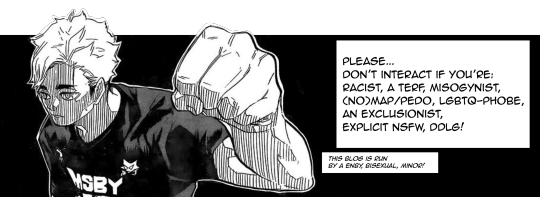
#—🎀 ikevamp!#ikevam#ikevamp#ikemen vampire#ikevam theo#ikevam arthur#ikevam napoleon#ikevamp theo#ikevamp arthur#ikevamp napoleon#ikevamp x reader#ikevam x reader#requests#anon requests#( i do not know how to tag this lol )#—📨 request#—💌 mysterious messenger!
130 notes
·
View notes
Photo

La Marseillaise by Jean Béraud, 1880
This spirited, light-filled painting shows Bastille Day in Paris in 1880. Exuberantly singing the Marseillaise, a group of workmen, artists, students and shopkeepers parade westward along the flag-draped rue St. Antoine from the Place de la Bastille towards the center of town. In the background rises the Colonne de Juillet, erected on the former site of the Bastille prison as a memorial to the July Revolution of 1830. Like most of Jean Béraud’s paintings, in La Marseillaise the artist has created a terrific spectacle as well as an absorbing historical document.
Bastille Day had a contentious history in nineteenth century France. First celebrated in 1790, Bastille Day commemorates the July 14, 1789 storming of the Bastille fortress by the people of Paris, a key inaugural event of the French Revolution. However, celebrating Bastille Day was suppressed by successive French regimes including by Napoleon, for it symbolized the death of Absolutism and the birth of the Republic. In fact, the parade in 1880 that Béraud has painted here was one of the first celebrations of the anniversary since 1790.
The 1870s were the era of the “Monarchist Republic,” and had been one of hardship and political instability, following France’s defeat in the Franco-Prussian War. This regime crumbled in 1878 and in June of that year, the first national holiday since the war (called the Fête de la Paix) was held, to coincide with the Exposition Universelle in Paris. Several artists, including Claude Monet, Edouard Manet and Alfred Sisley, painted pictures of the city’s streets filled with billowing flags setting off a trend that would endure for decades on both sides of the Atlantic. To mark the Republic's centenary and to promote the patriotic and republican sentiment in France, in 1879-80 the new liberal leaders of the Third Republic re-established July 14th as a national holiday and proclaimed the Marseillaise as the national anthem.
The festivities around Bastille Day in 1880 were designed by the government to boost morale and included an immense military review at Longchamps, followed by a parade into central Paris. Afterwards there were smaller parades in neighborhoods, with spectacles fireworks and dancing. In all of this, France’s strength, resilience and future were stressed. Republican symbols like the tricolor flag, the rooster, the cockade and the bonnet rouge, all shown in Béraud’s painting, were revived. La Marseillaise contains many fascinating period details – the women’s parasols in the colors of the tricolor, the flags with roosters (an ancient symbol of Gaul) in the center, as well as individual figures who convey much about the era. The front rank of marchers represents the people rebuilding France after the war. On the left the older man in the long tan coat is perhaps a syndicaliste or labor leader, flanked by men and boys in the short blue smocks still worn by tradesmen in France today. In the center are two men in black who, by their unconventional dress, appear to be artists or writers. One wears a red cummerbund instead of a belt, while the other sports a flamboyant pink cravat and a tall hat typical of the dandies and bohemians in 1880. Between them walks a pregnant woman, representing the future of France. To the right is a bearded man, probably unemployed, poorly dressed and emaciated. On his shoulders sits a bright, innocent child dressed in a tricolor sash and bonnet rouge; the two figures form a contrast between the economically depressed past and the prosperous future. Next to this pair are three teenagers of differing persuasions-- a lycéen with a leftist republican viewpoint, a military cadet with a more moderate-conservative view, and a church student with the Ultra-Catholic party -- stride united towards tomorrow and led by a determined, top-hatted teacher.
All of these people parade from the area around the Place de la Bastille, while a few people from different milieus are grouped on the sidewalk. At the far right, a well-to-do family has come upon the parade, with mixed reactions. The young father steps forward enthusiastically to salute the marchers and join in the Marseillaise, while his wife looks on holding her daughter back from the throng. Over her shoulder, her father regards the boisterous crowd with wariness and even dismay, suggesting the still strong presence of the haute-bourgeoisie. In front of this family are a couple from the country more interested in their own flirtation than the parade.
For many, Bastille Day seemed to be the dawn of a new era. La Marseillaise suggests that Béraud, like many artists, was excited by the rebirth of republicanism and in this painting he captures the widespread feeling of hope and excitement. In combining a lively, luminous scene with revealing detail, Béraud shows once again why he has come to be regarded as the quintessential chronicler of late nineteenth century Paris.
2 notes
·
View notes
Text

Wolfgang Amadeus Mozart (Tsundere x Loves cleanliness), Voice Actor: Toshiyuki Toyonaga
A genius musician who was previously called a child prodigy. He dedicates his body and mind to music, and came to this mansion to compose supreme music. Behind his cold and indifferent attitude hides his delicate/sensitive true face...?
Birthday: 27 January
Height: 175cm
Occupation: musician
Hobby: billiards
Dislike: malicious gossip/speaking ill behind someone’s back (he thinks it’s better to speak clearly)
Special skill: play piano while blindfolded
Not good at: bad at drawing
Favourite food: meat dish
Not favourite food: cookie (dried out food)

Leonardo da Vinci (Genius x Cunning man), Voice Actor: Kenjiro Tsuda
Being called “All-round genius”, he excels overwhelmingly in various fields. He doesn’t have the concept of normal/ordinary and has to check everything with his own eyes - an embodiment of curiosity. The aloof and cunning genius seems to have a big secret …?
Birthday: 15 April
Height: 181cm
Occupation: artist
Hobby: meddling everybody
Dislike: fixed concepts, old custom
Special skill: dancing
Not good at: nothing
Favourite food: apples
Not favourite food: -

Napoleon Bonaparte (Charisma x Oresama), Voice Actor: Nobunaga Shimazaki
Being called “Once-in-a-thousand-year hero”, a revolutionary who is proud of his overwhelming strength. Behind his cool expression is his wish for people to always be able to live in peace. Even he himself doesn’t understand why he is in the mansion …?
Birthday: 15 August
Height: 178cm
Occupation: revolutionary
Hobby: reading (mainly biographies and philosophy books)
Dislike: being restricted, prejudice
Special skill: horsemanship, swordsmanship, cooking
Not good at: getting up early (wants to sleep at least 7 hours)
Favourite food: crepes
Not favourite food: meal for one person

Arthur Conan Doyle (Womanizer x Frivolous), Voice Actor: Ryohei Kimura
A British writer known as the author of the “Sherlock Holmes” series. The genius who laid the foundation for mystery genre. Although he is smart and has excellent perception, his attitude is generally frivolous. As a playboy, he approached MC confidently when they just met. It seems like the reason he is in the mansion is related to his writing ...?
Birthday: 22 May
Height: 176cm
Occupation: mystery writer
Hobby: writing, game/contest that he will win
Dislike: people talking to him about Holmes
Special skill: sports, board games, deduction
Not good at: sudden changes, ‘junior/inferior-dominating-senior/superior’ twist
Favourite food: coffee, fudge
Not favourite food: herbal tea

Vincent van Gogh (Pure x Gentle Angel), Voice Actor: Yoshihiko Aramaki
The genius painter that loved the sun and painted the masterpiece “Sunflower”. The older brother of the Van Gogh brothers is called “the gentle angel” due to his gentle personality. He doesn’t have emotions like anger and jealousy. The moment he understands love, a big change is going to come … ?
Birthday: 30 March
Height: 175cm
Occupation: painter
Hobby: going to various places to draw
Dislike: Theo’s sad face
Special skill: a good listener, strong in fights/arguments
Not good at: unfamiliar with emotions/love
Favourite food: pancake with only butter
Not favourite food: sweets

Isaac Newton (Contrarian x Hidden wolf), Voice Actor: Shouta Aoi
A genius physicist. The story of him seeing apples falling from an apple tree in the garden and coming up with universal graviation is too famous. With his contrarian personality, he keeps a distance from MC who just arrived at the mansion. Having a different meal rule from the other residents, he also has a different face as a vampire …?
Birthday: 25 December
Height: 173cm
Occupation: physicist
Hobby: disassembling machine, astronomical observation
Dislike: apples (because everybody tease him)
Special skill: calculation, puzzle
Not good at: explaining things in an easy-to-understand way
Favourite food: sandwich, taste of home
Not favourite food: alcohol (only a few drops and he will be drunk)
#ikemen vampire#ikevam mozart#ikevam leonardo#ikevam napoleon#ikevam arthur#ikevam vincent#ikevam isaac#kouei116 translation#kouei116 ikevam
199 notes
·
View notes
Photo

During the past few weeks, I felt sometimes that the Suez canal was flowing through my drawing room.
- Clarissa Eden (née Spencer-Churchill), Countess of Avon
Clarissa Eden, born 28 June 1920, is the widow of Anthony Eden, 1st Earl of Avon (1897–1977), who was Prime Minister of the United Kingdom from 1955–1957.
Lady Eden is the daughter of Major Jack Spencer-Churchill (1880–1947), the younger brother of Winston Churchill, by his marriage to Lady Gwendoline ("Goonie") Bertie (1885–1941), a daughter of the 7th Earl of Abingdon, who had been married in 1908. She is thus a niece of Sir Winston Churchill. Her paternal great-grandfather was the 7th Duke of Marlborough, and her maternal great-great-grandfather the 3rd Marquess of Londonderry, half-brother of the 2nd Marquess, who, as Viscount Castlereagh was Foreign Secretary during the Congress of Vienna of 1815 that followed the Napoleonic Wars.
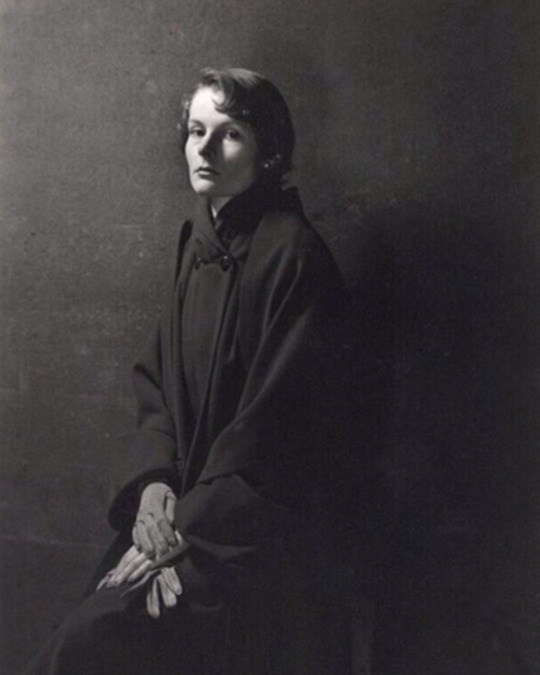
Clarissa Spencer-Churchill was born at her parents' house in the Cromwell Road, Kensington, London. She was educated at Kensington Preparatory School and then at Downham School, Hatfield Heath, a "fashionable boarding school ... orientated to horses". Seventy years later she said she had also felt the need to get away from home—"I just wanted to get out from under the whole thing of being loved too much".
In 1937 Clarissa studied art in Paris. Her mother had asked the British Ambassador, Sir George Clerk, to keep a watchful eye on her, an unintended consequence of this being that she was taken under the wing of an Embassy press secretary who, with his wife, introduced her to a round of café society parties. Among the friends she made in Paris were the monocled Fitzroy Maclean, a future politician and adventurer who was then third secretary at the embassy, and the writer Marthe Bibesco. Together with two female contemporaries, she made a visit to the Folies Bergère, an unusual destination for 16-year-old girls, where the singer Josephine Baker, clad only in a circlet of bananas, became the first naked female body she had ever seen.

In the summer of 1937 Clarissa accompanied Julian Asquith (grandson of the Liberal Prime Minister H. H. Asquith) and his mother, Katherine, on a tour, mainly by third class rail, across the Apennines in the Tuscany region of Italy. Among other artistic treasures, she saw for the first time the 15th century frescos by Piero della Francesca at Arezzo, one of which, "The Queen of Sheba Adoring the Holy Wood" (c.1452), she nominated in 2010 as her favourite painting: "in an age of violence he went on painting clearly and calmly".
When Clarissa returned to London she enrolled at the Slade School of Fine Art. Around this time she displayed her individualism by acquiring a specially tailored trouser suit along the lines of those associated with the actress Marlene Dietrich after the latter's appearance in the film, Morocco (1930).
1938 was the future Lady Avon's "coming out" year and she was regarded as "one of the more notable débutantes" in a "vintage year for beautiful girls", but, having mixed with older and more sophisticated people in Paris, she seems to have disdained the circuit—since described by Anne de Courcy as "more or less naive seventeen- and eighteen-year-olds suddenly flung into a round of gaities"—and was never presented at Court.
Another débutante of 1938, Deborah Mitford, later Duchess of Devonshire, recalled Clarissa Spencer-Churchill as exhibiting "more than a whiff of Garbo in a dress by Maggy Rouff of Paris”.

Among those with whom Clarissa danced at that year's Liberal Ball was the future double agent Donald Maclean, who complained that she was too smart to be "a proper Liberal girl like the Bonham-Carters or the Asquiths". She also knew Guy Burgess, who fled to Russia in 1951 when he and Maclean were about to be unmasked as traitors.
A 2015 biography of Burgess, a homosexual, contained claims that, encouraged by his Soviet "handlers", he had contemplated marriage to Clarissa. However, the latter, then aged 95, denied that they had been close. She described Burgess as "courteous, amusing, nice and good company", but said that he had been "standoffish" towards her and did not wish any friendship to develop.
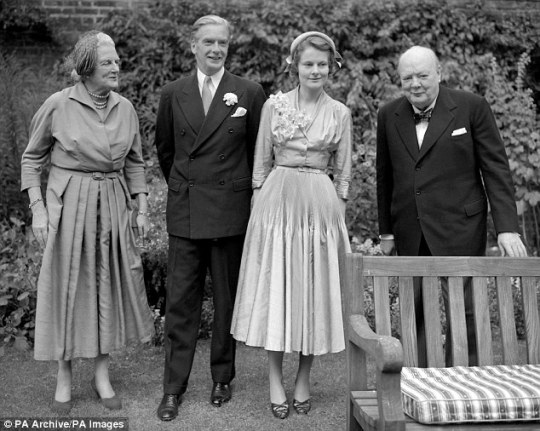
In 1940, encouraged by economist Roy Harrod, Clarissa went to Oxford to study philosophy, although not as an undergraduate because of her lack of qualifications. While there she became associated with, among other leading academics, Isaiah Berlin and Maurice Bowra. Lady Antonia Fraser, whose father, later Lord Longford, was a Fellow of Christ Church, has described her as "the don's delight". For a short while she was tutored by A. J. Ayer, a future Wykeham Professor of Logic known for his libidinous lifestyle, although his womanising was not apparently extended to her.
When Clarissa moved back to London, she decoded ciphers in the Communications Department of the Foreign Office, where her future husband was the Secretary of State from 1940 to 1945.
Clarissa married Anthony Eden in 1952, becoming Lady Eden in 1954 when he was made a Knight of the Garter, and then becoming Countess of Avon in 1961 on her husband's being created an earl.
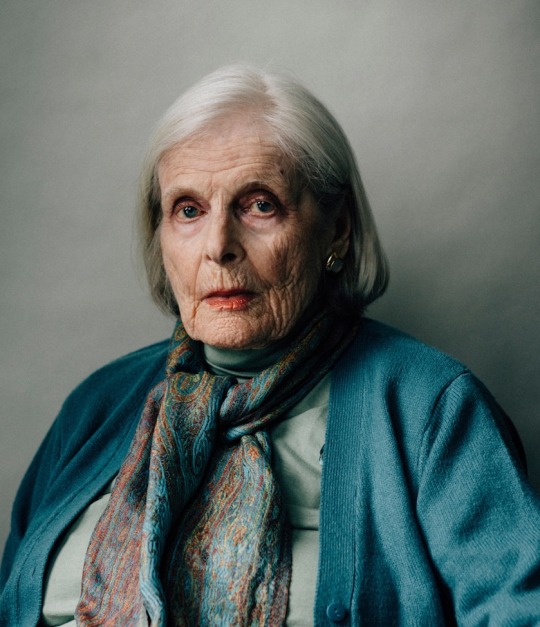
Her memoir, sub-titled From Churchill to Eden, was published in 2007 under the name of Clarissa Eden.
Since the death of Mary Wilson, Baroness Wilson of Rievaulx on 6 June 2018, Lady Avon is the oldest living spouse of a British Prime Minister.
**Portrait by Cecil Beaton
#clarissa#eden#quote#britain#anthony eden#history#world war two#winston churchill#aristocracy#nobility#lady avon#oxford#foreign office#suez crisis
24 notes
·
View notes